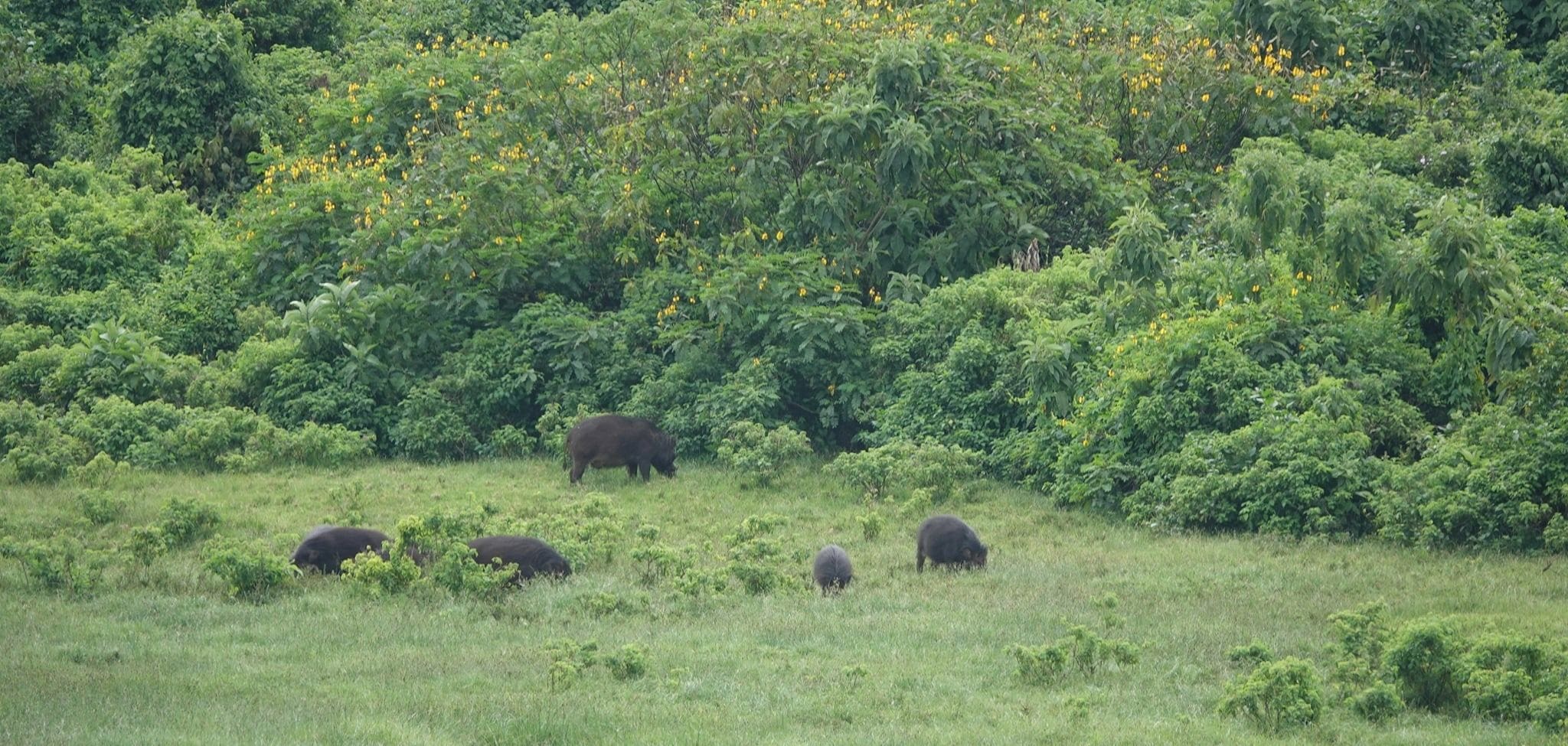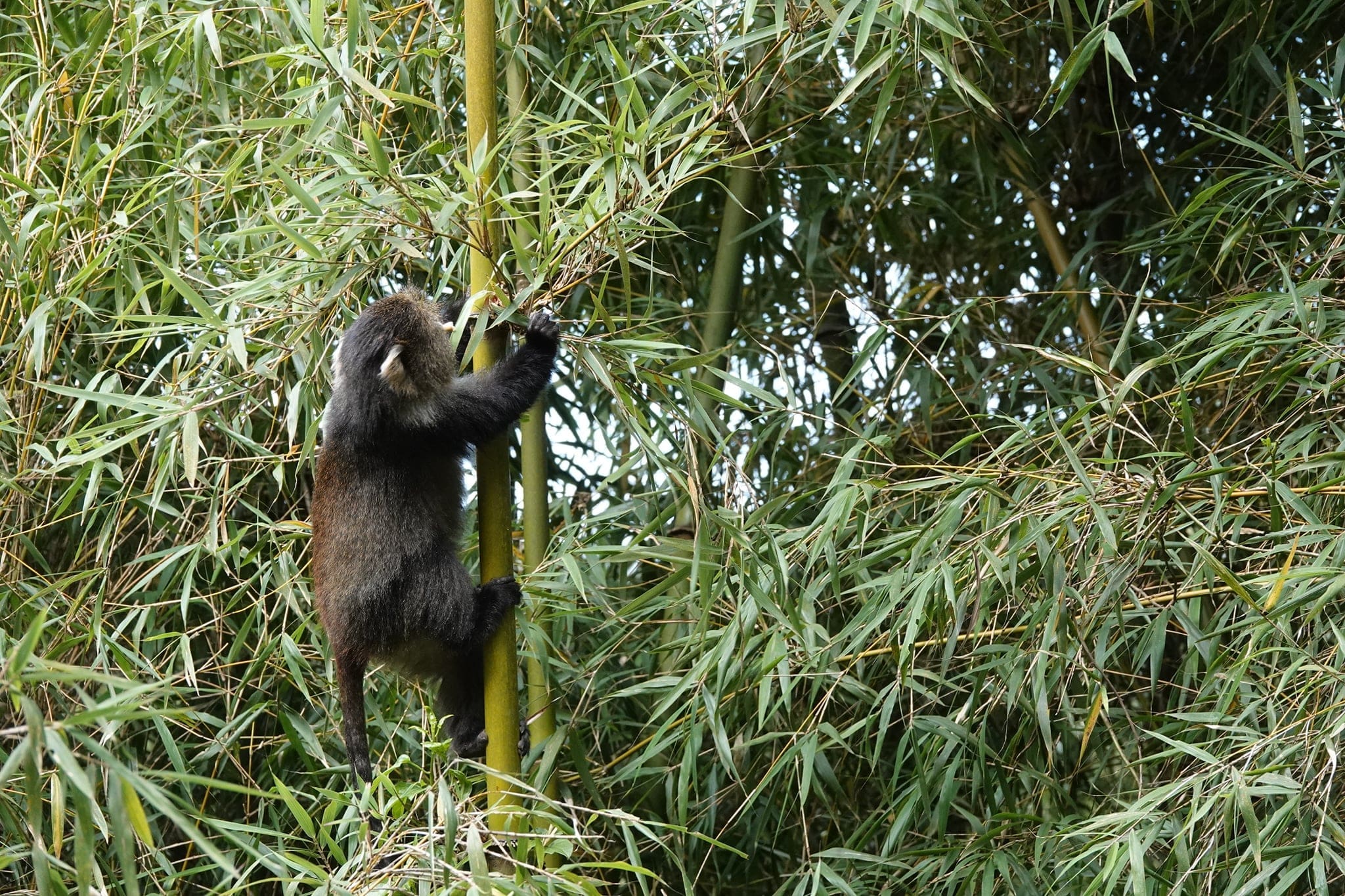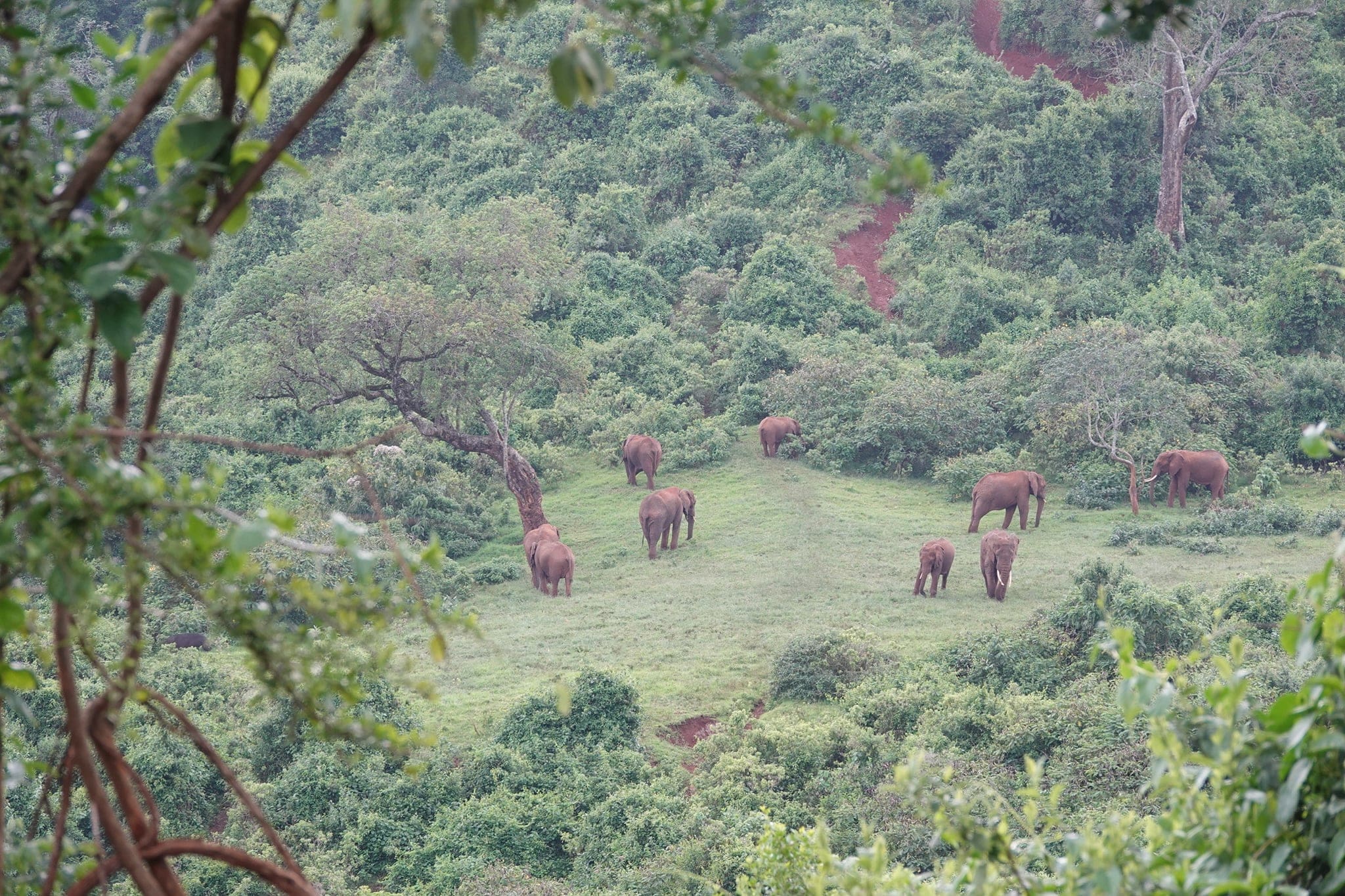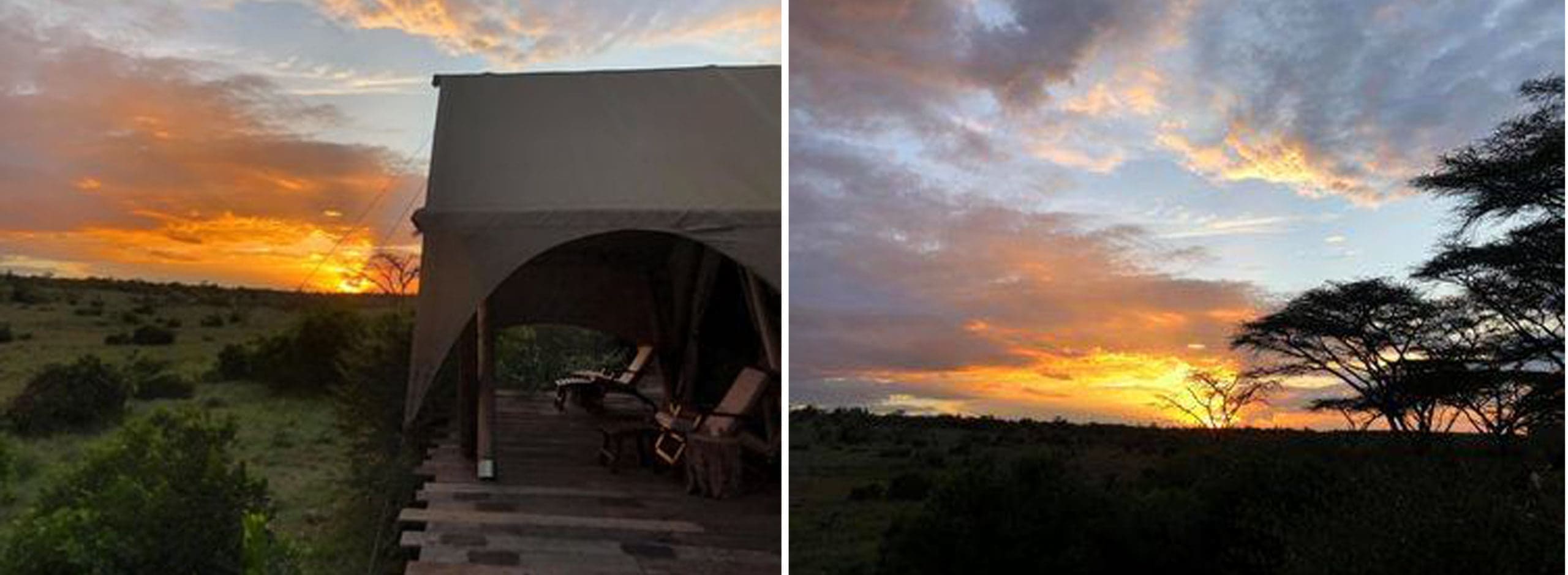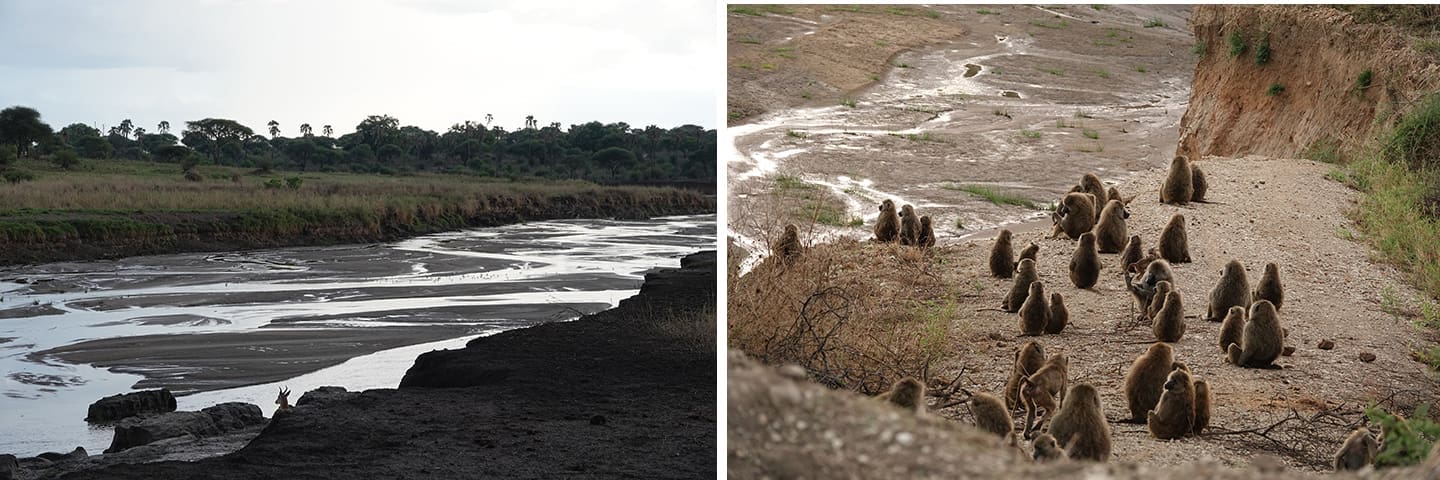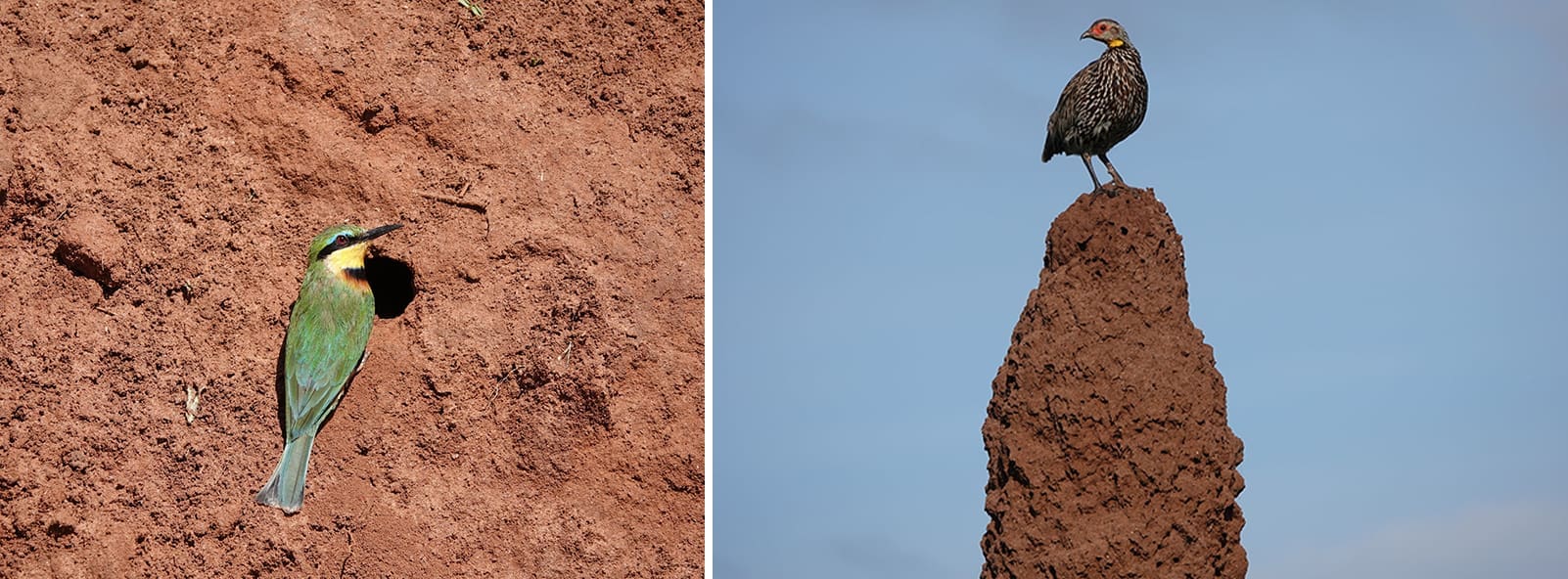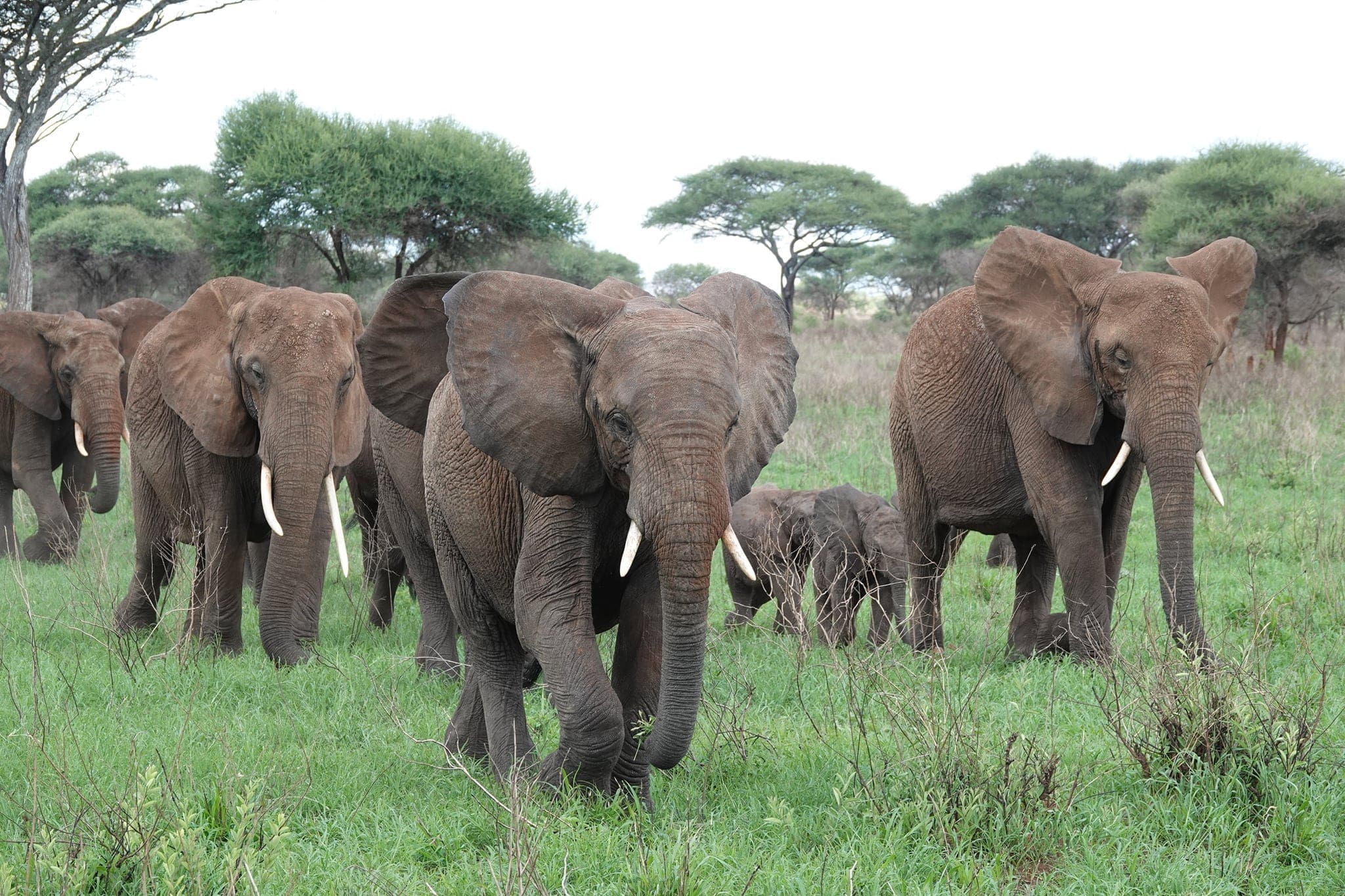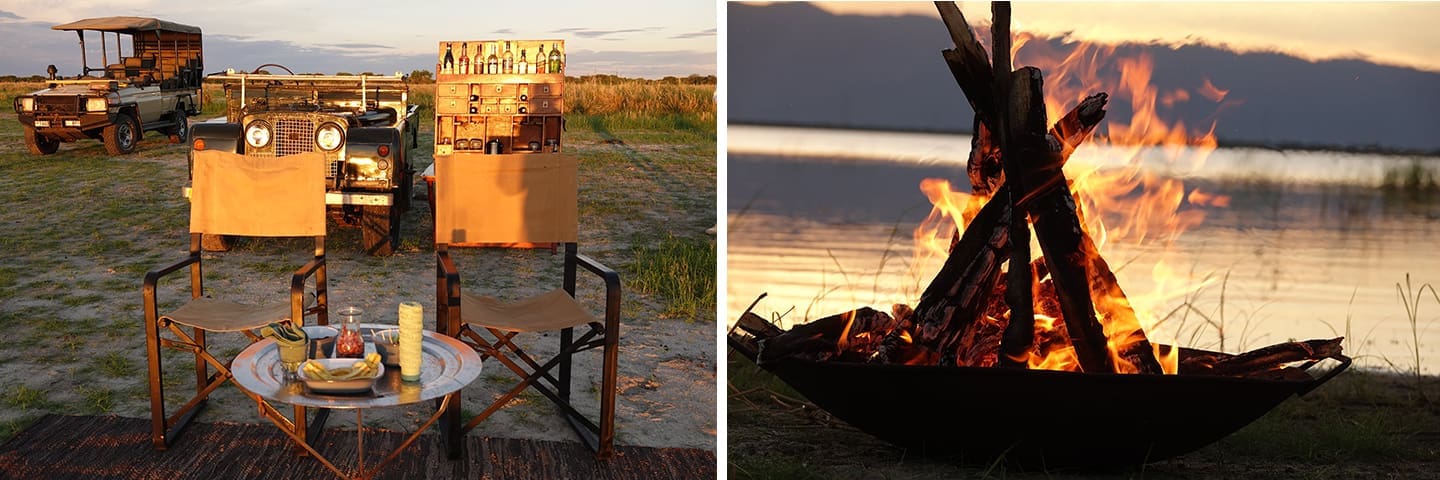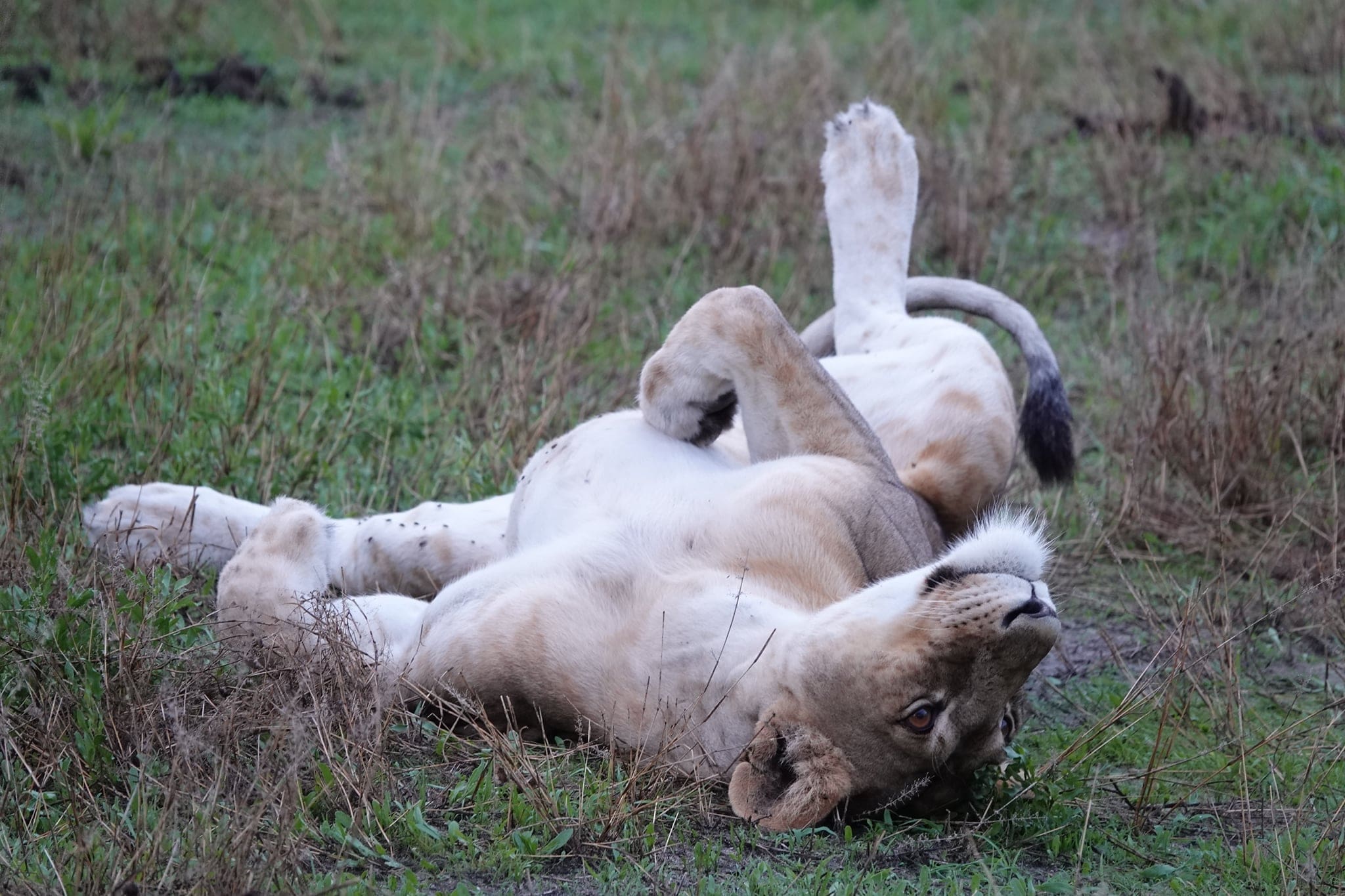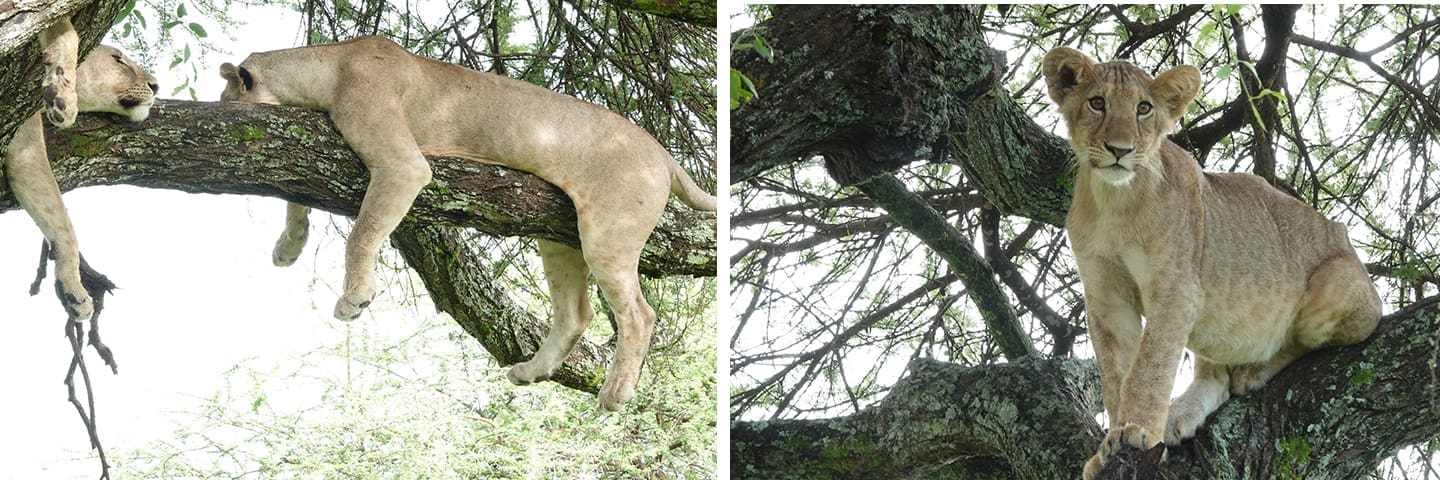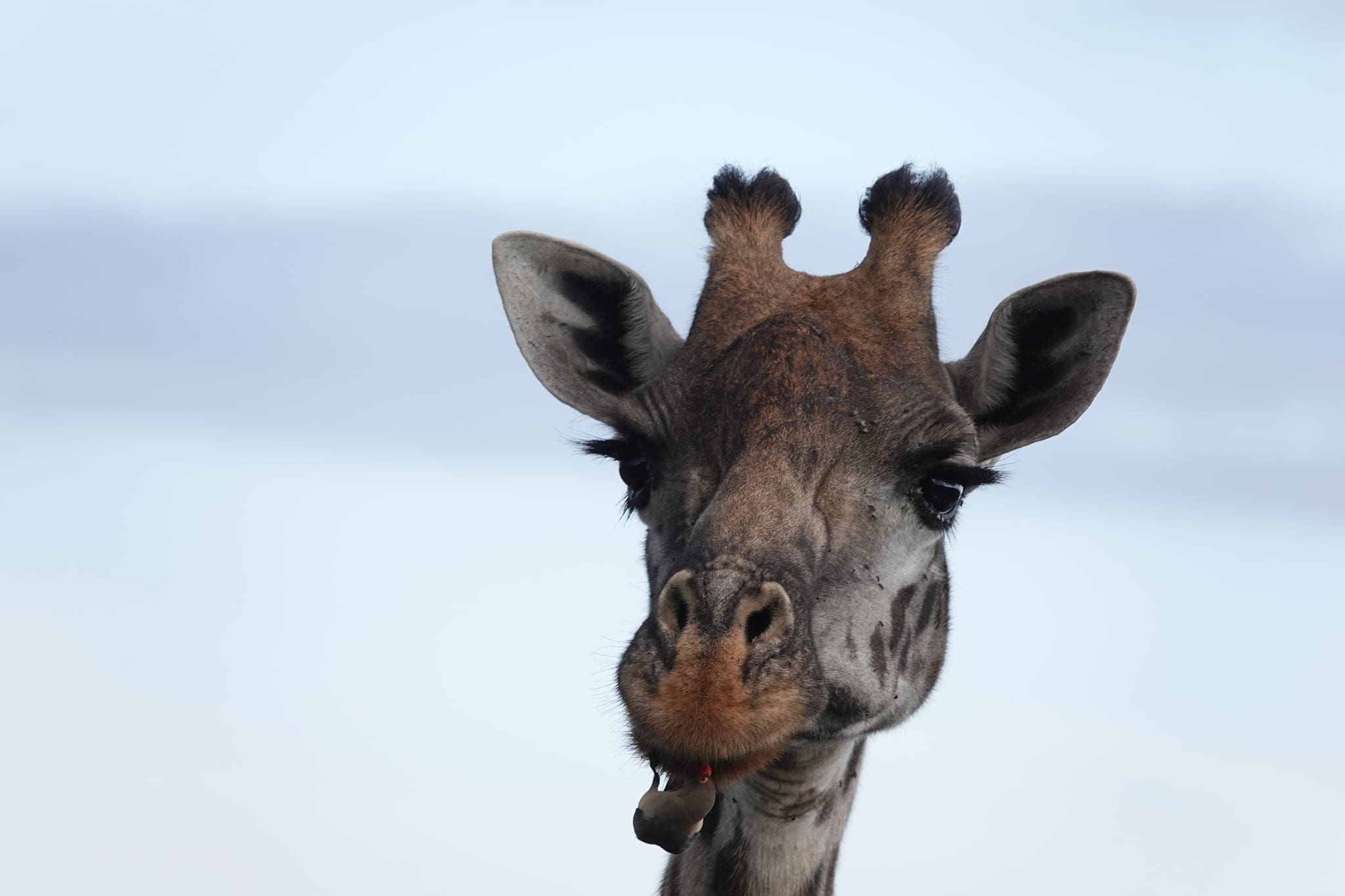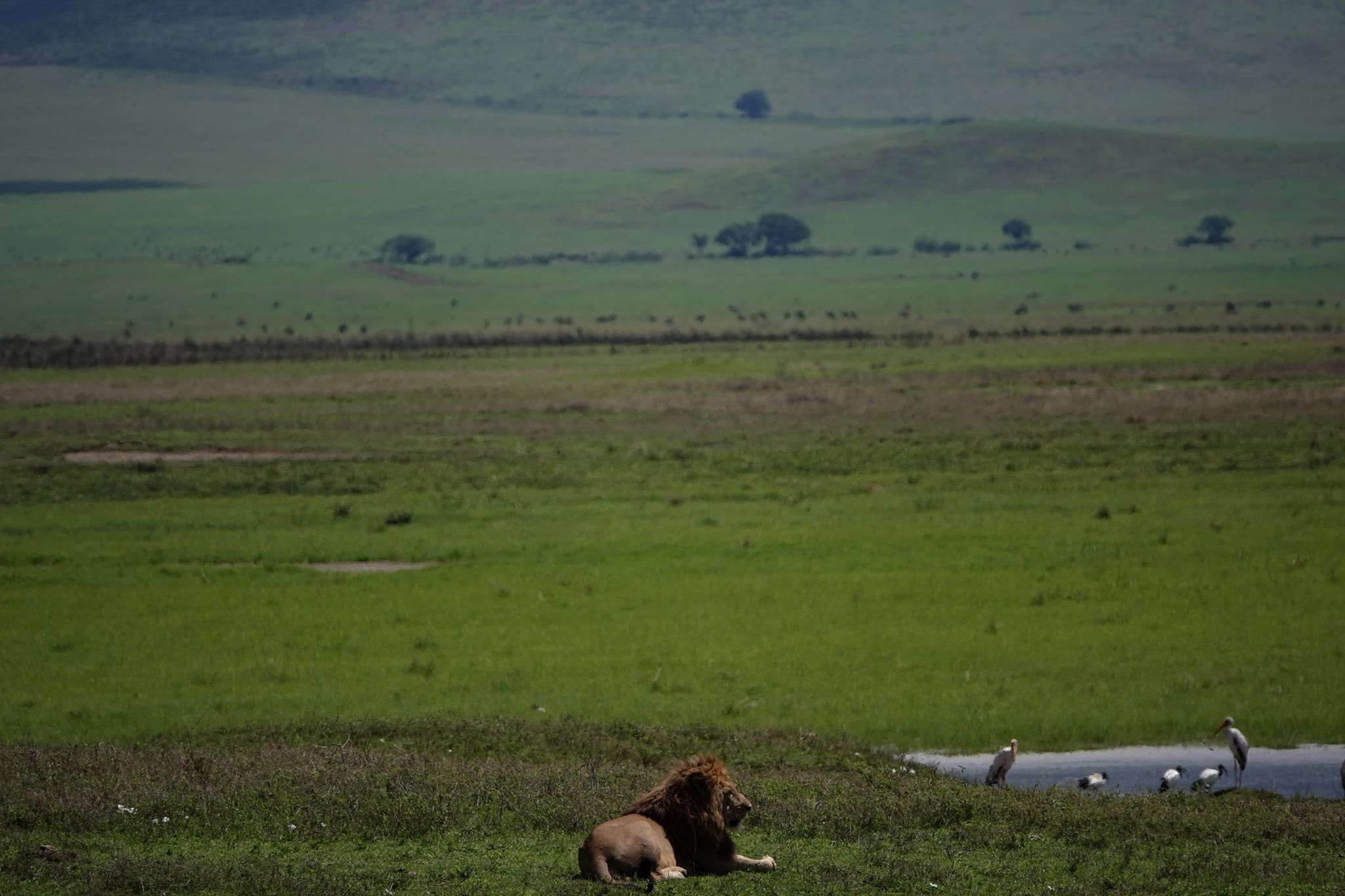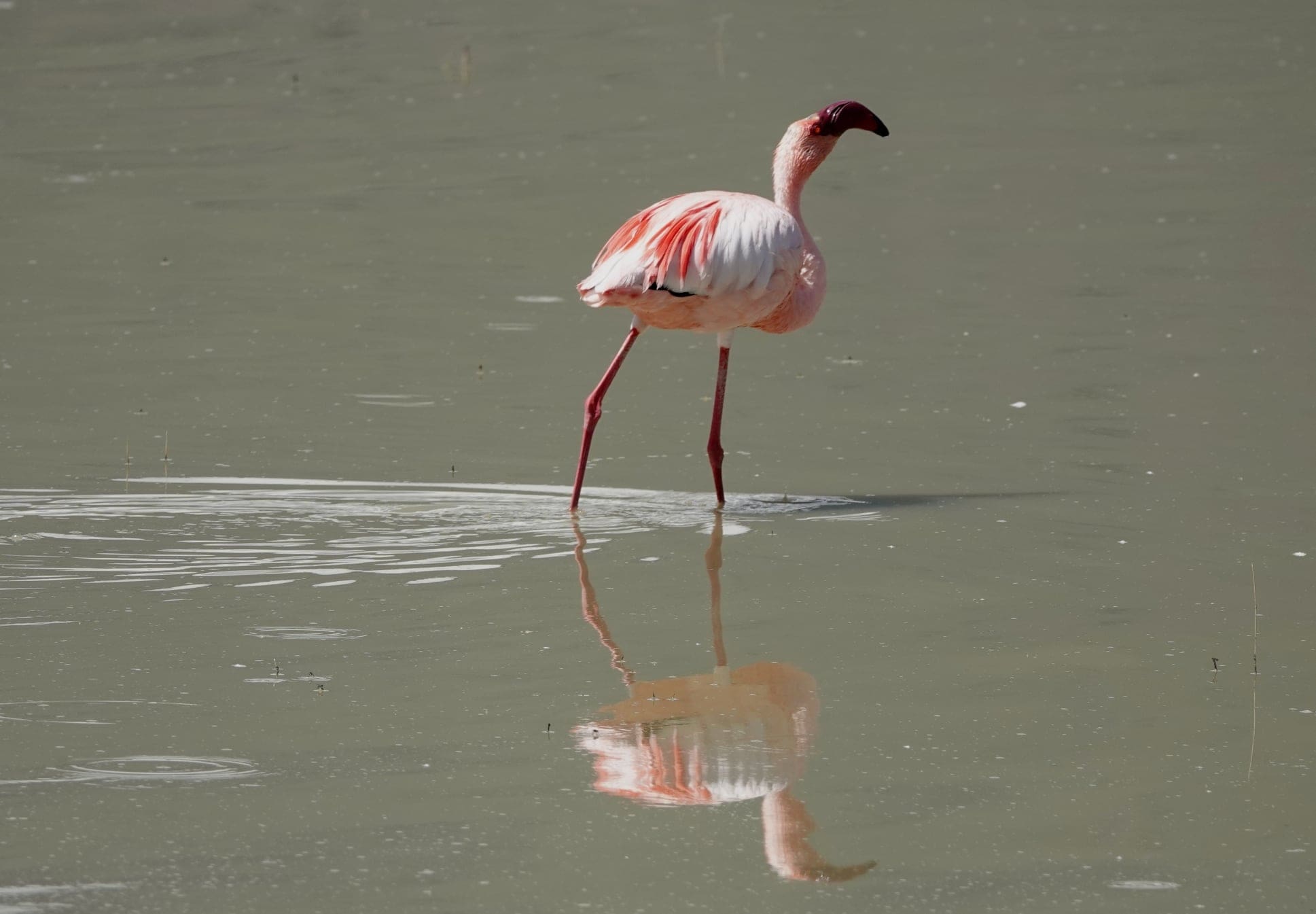Alison Nolting in Kenya & Tanzania
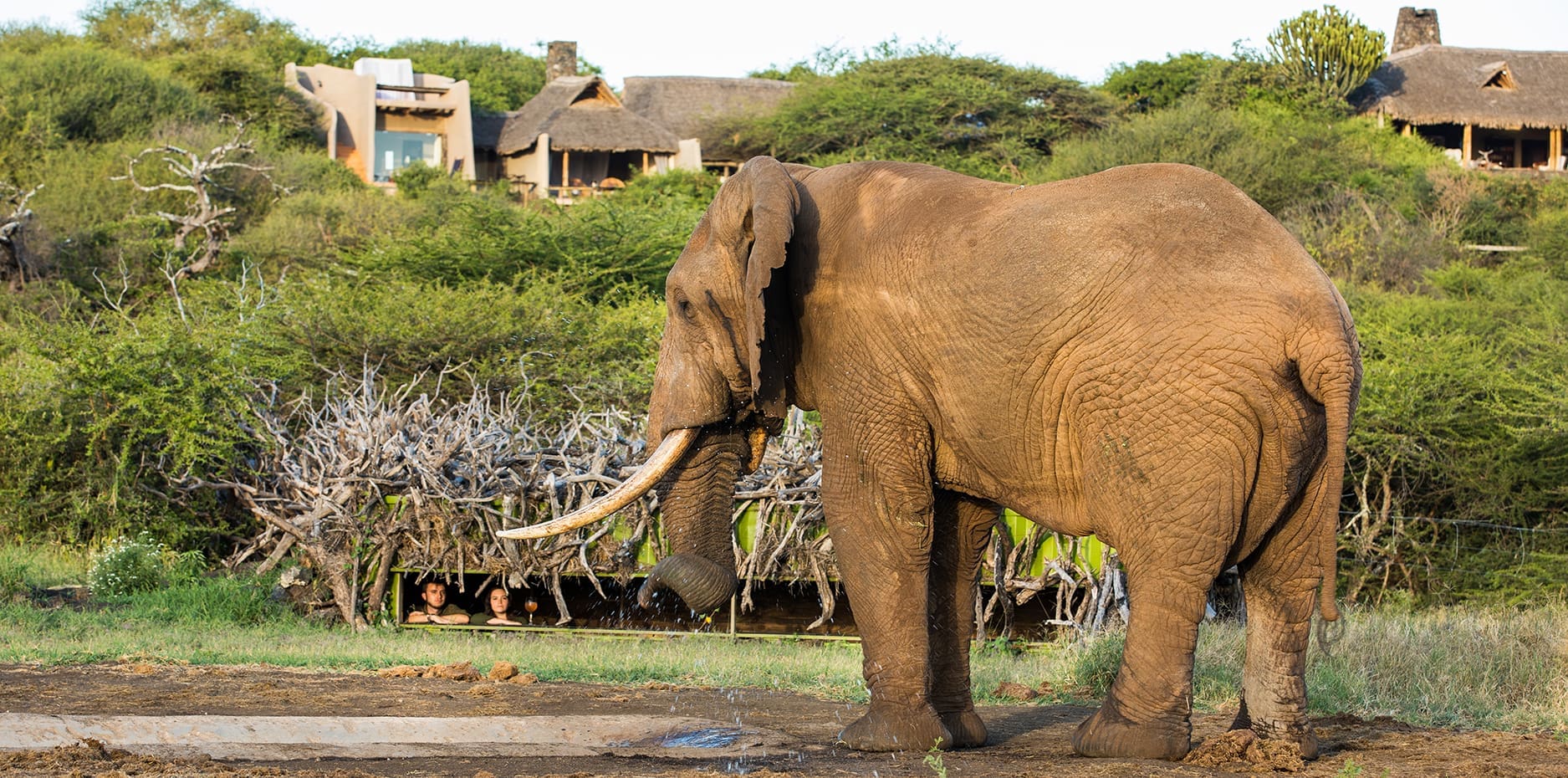

Alison Nolting spent 30 days in Kenya and Tanzania last November. She her photos and stories will inspire consideration to travel to Africa in the coming months. The camps and lodges are open and AAC can guide you through the air travel guidelines, and arrival protocols in country for your trip planning.
Alison Nolting in Kenya and Tanzania #1 – Chyulu Hills
Alison has arrived in East Africa where borders are open and it is start of the green season, one of her favorite times to explore Kenya and Tanzania. So far she has had an eventful 6 nights at both Giraffe Manor in Nairobi and Ol Donyo Lodge in Chyulu Hills! Before arriving there, she came prepared with both a Covid Test and Kenya Health form. She flew Qatar Airways to Nairobi via Doha. The staff aboard all wore PPE clothing, masks and eyewear.
Additionally, all passengers were given face shields. Both lodges exercised strict protocols as well, with hand sanitizer readily available, staff all wearing masks and social distancing practiced on game drives and during meal times.
This photo album depicts her time at Ol Donyo Lodge in the picturesque Chyulu Hills. She and her guide Jackson captured some great photos, including some sunset photos, a view of Kilimanjaro, a morning horseback safari followed by a bush breakfast, and some of the area’s famous “big tusker” elephants. The appeal for fresh open spaces, connecting with nature, and private experiences are waiting for those who wish to travel in the next few months in Africa. Alison feels confident that it is Safer on Safari!




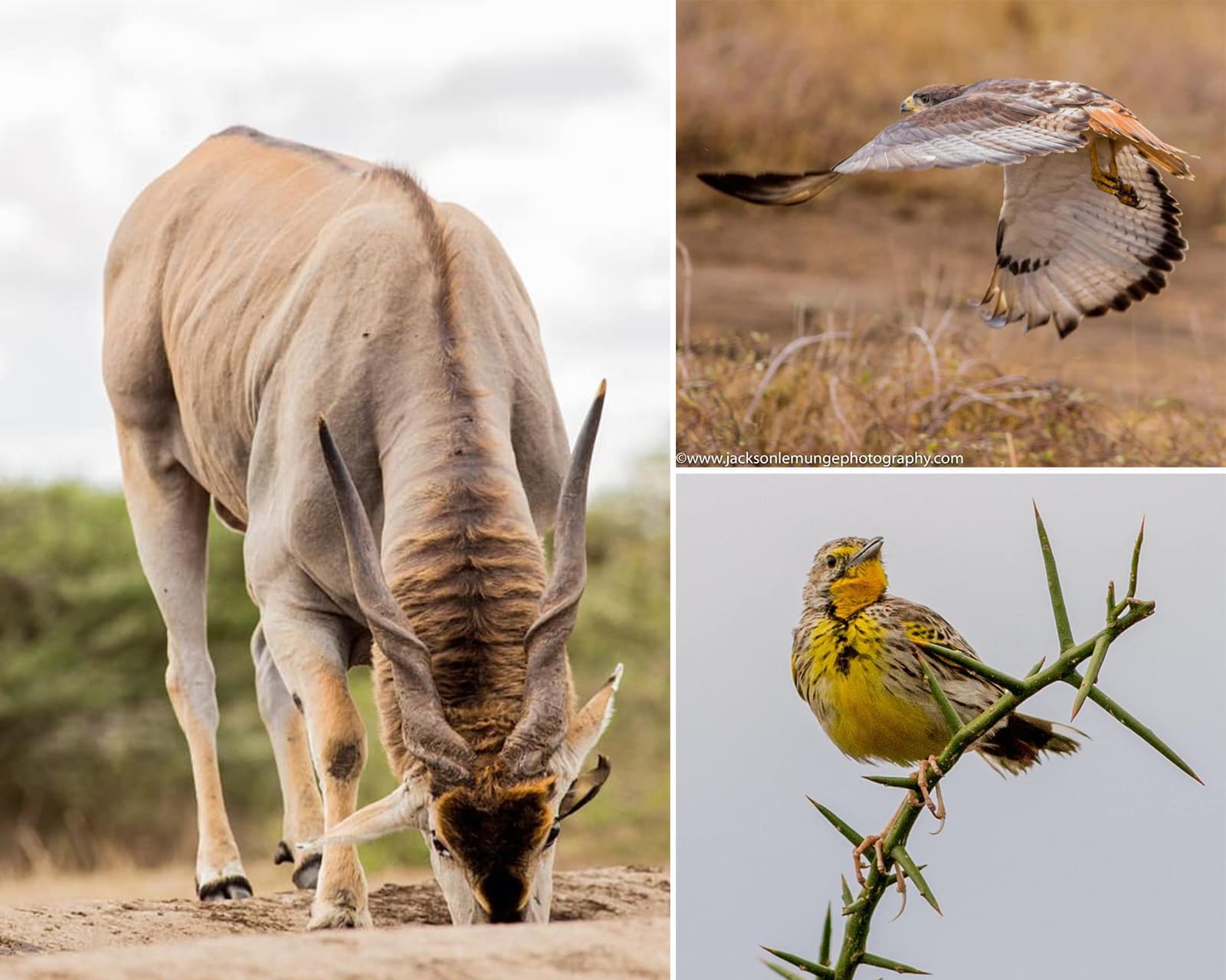

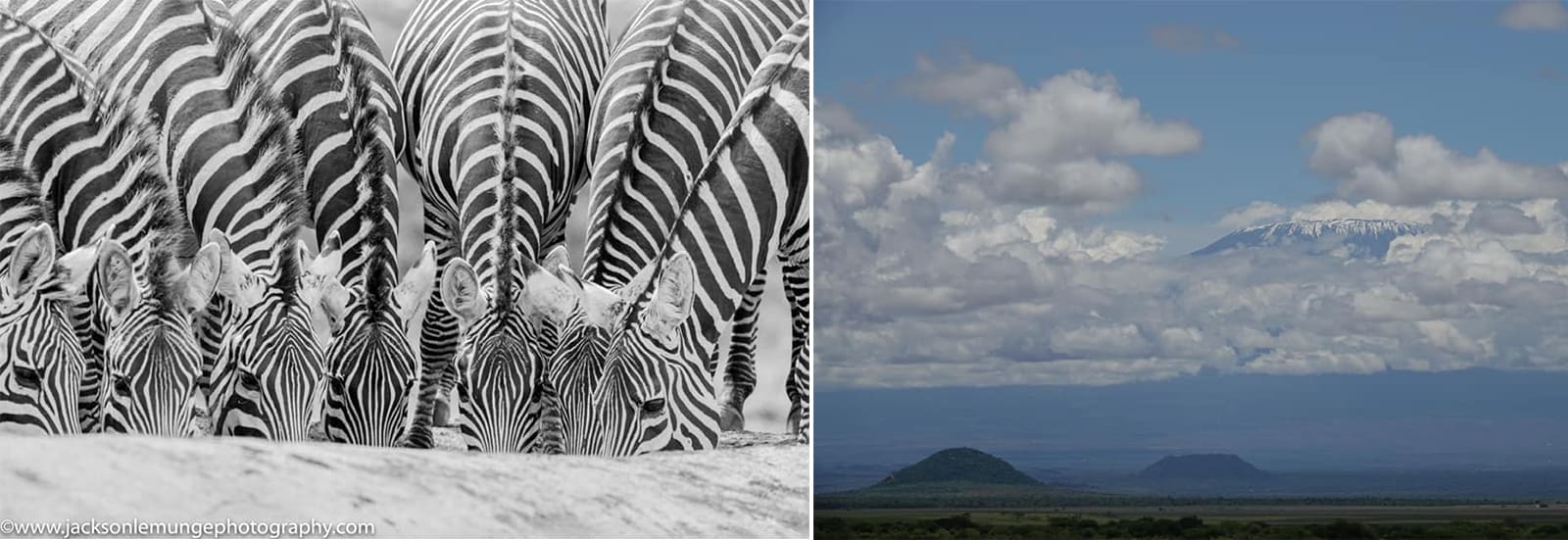

Alison in Kenya & Tanzania #2 – Lewa Conservancy
The last four days have been been spent in Laikipia’s Lewa Wildlife Conservancy. This scenic 65,000 acre (18,000 hectare) wildlife area is located north of Mt. Kenya and south of Samburu National Reserve. As a rhino sanctuary, Alison’s highlights included a great morning walk out from Lewa Wilderness Lodge to track white rhino in the hills. She also had numerous sightings of black rhino with young calf. Other species seen on the game drives included elephant, lion, a cheetah, reticulated giraffe, Grevy’s zebra,and Somali ostrich. Her second stay was at the delightful gem Sirikoi; an oasis in the acacia forests with delicious food at every meal! Below are a few photos from Alison’s visit to Lewa, an impressive example where conservation and community come together to preserve their natural resources for future generations.
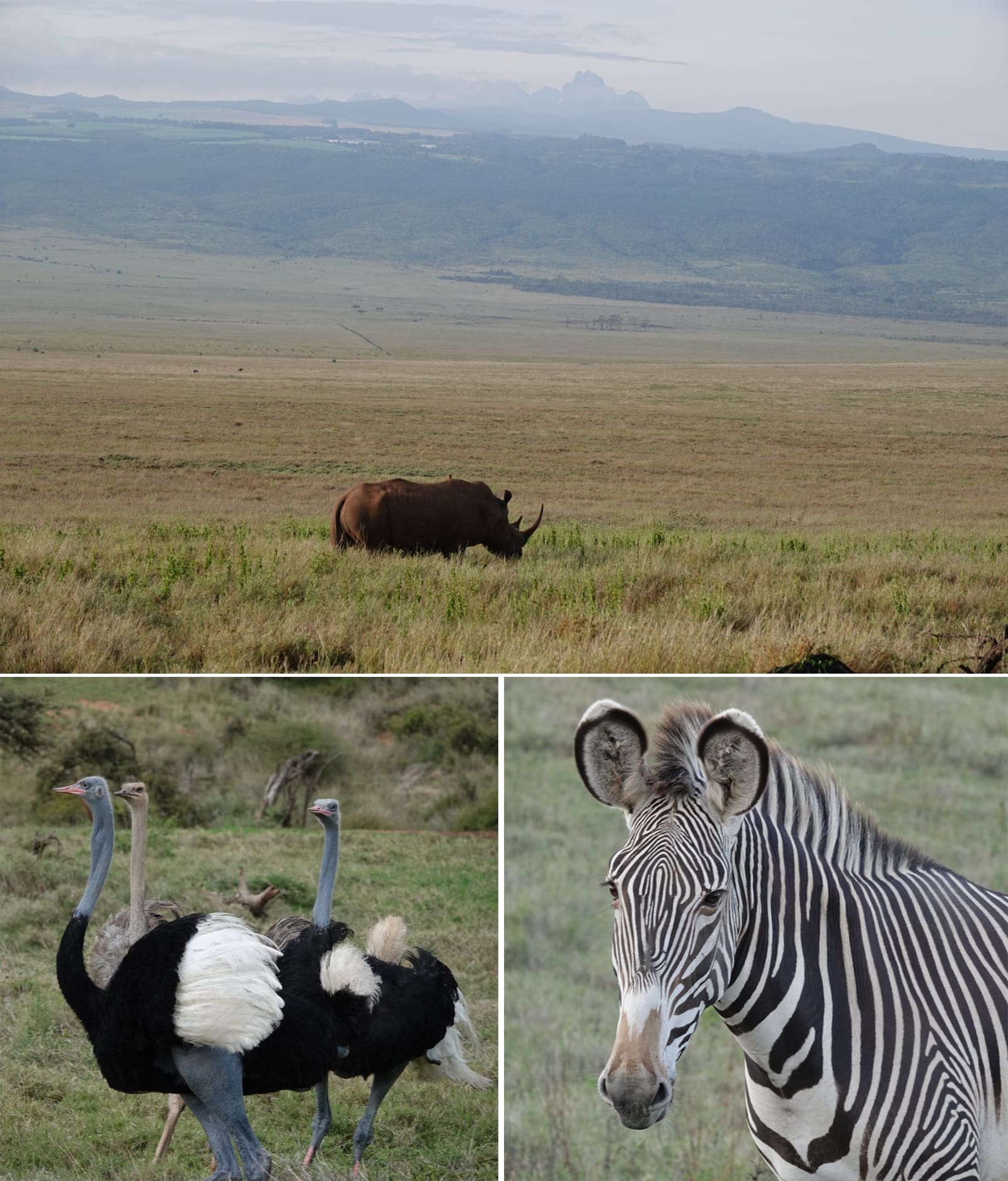

Top: a white rhino, with Mt. Kenya in the background; Bottom Left: Somali ostriches; Bottom Right: a Grevy’s Zebra
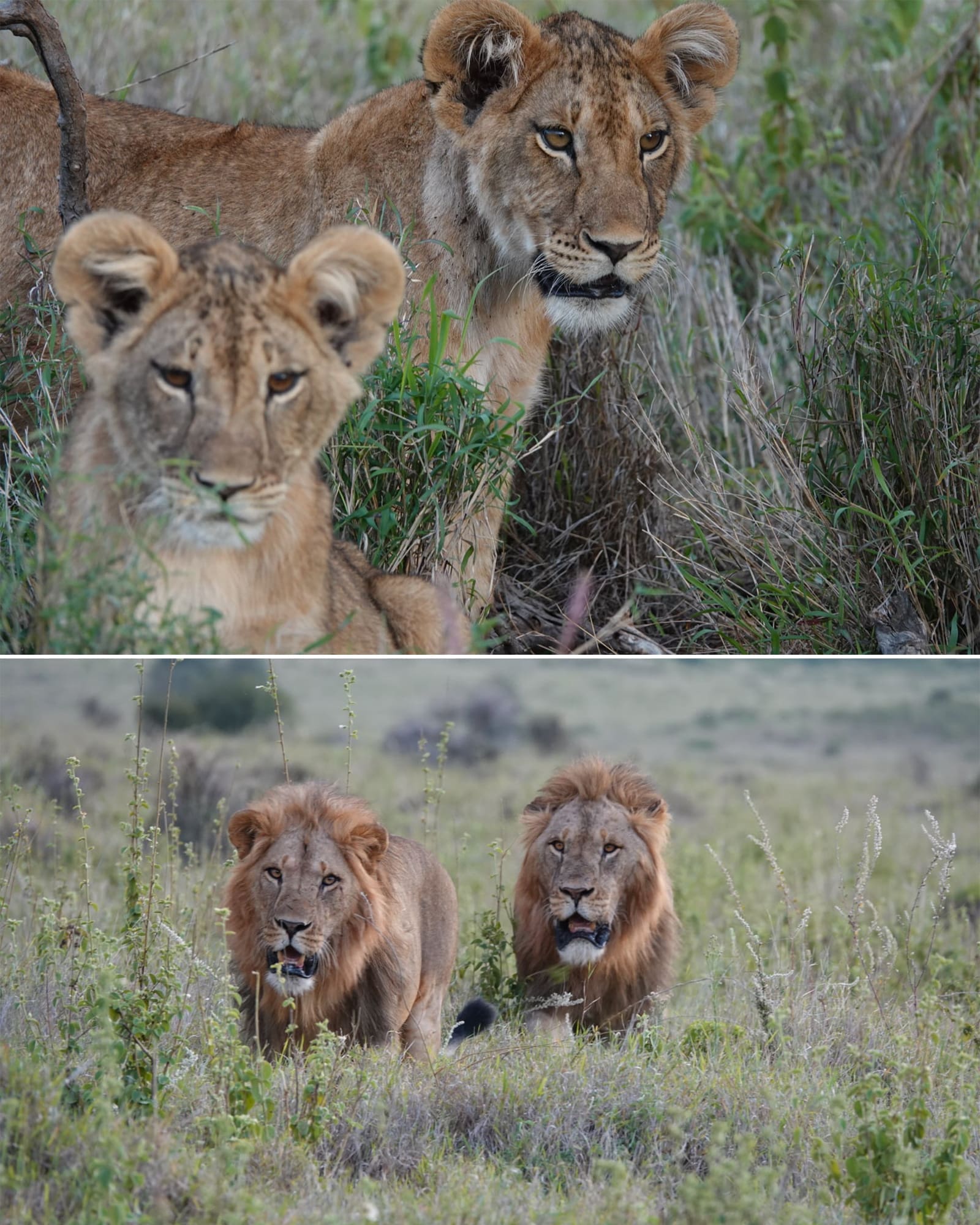

Great sightings of lion cubs and two fully-grown brothers
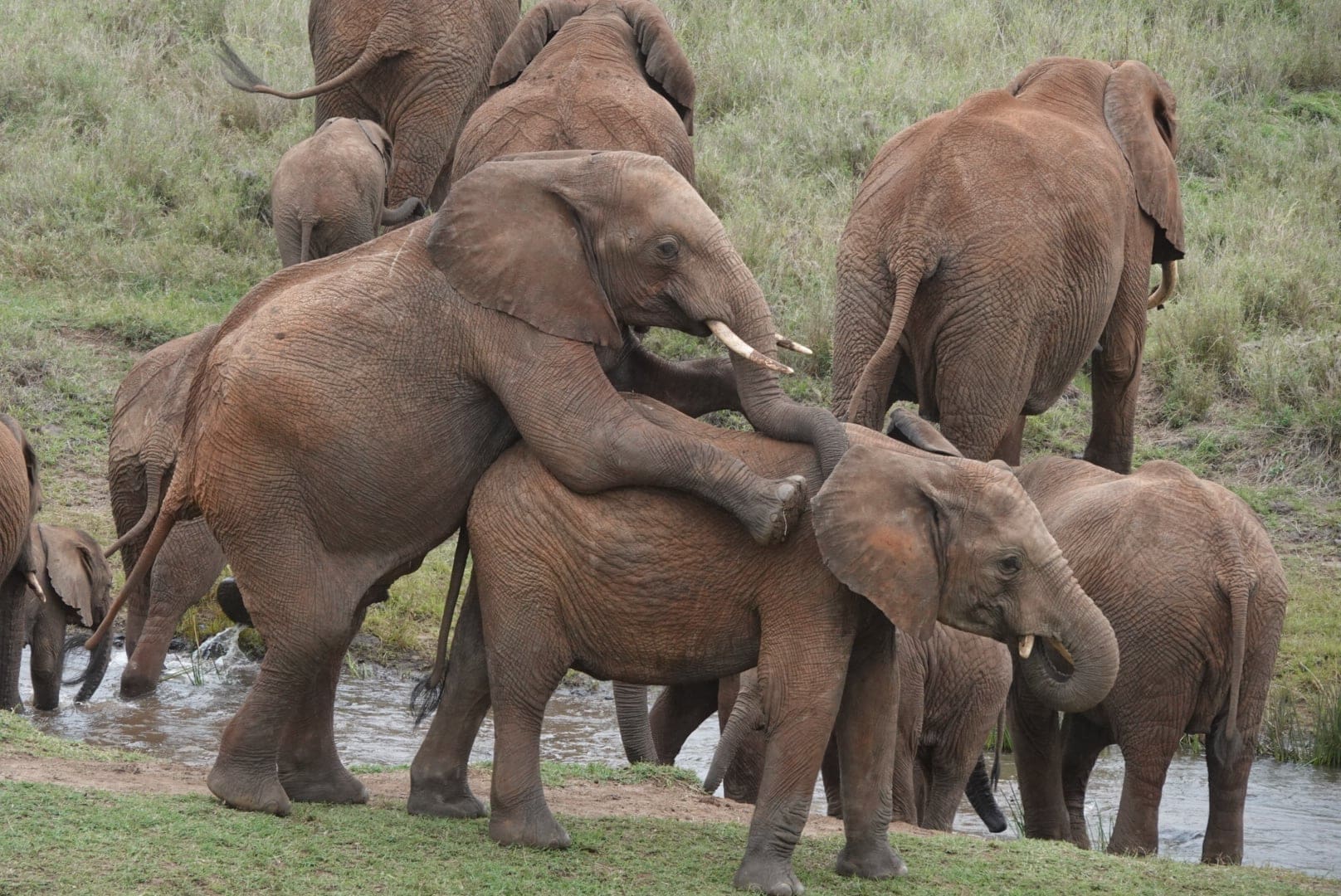

Horsing around!
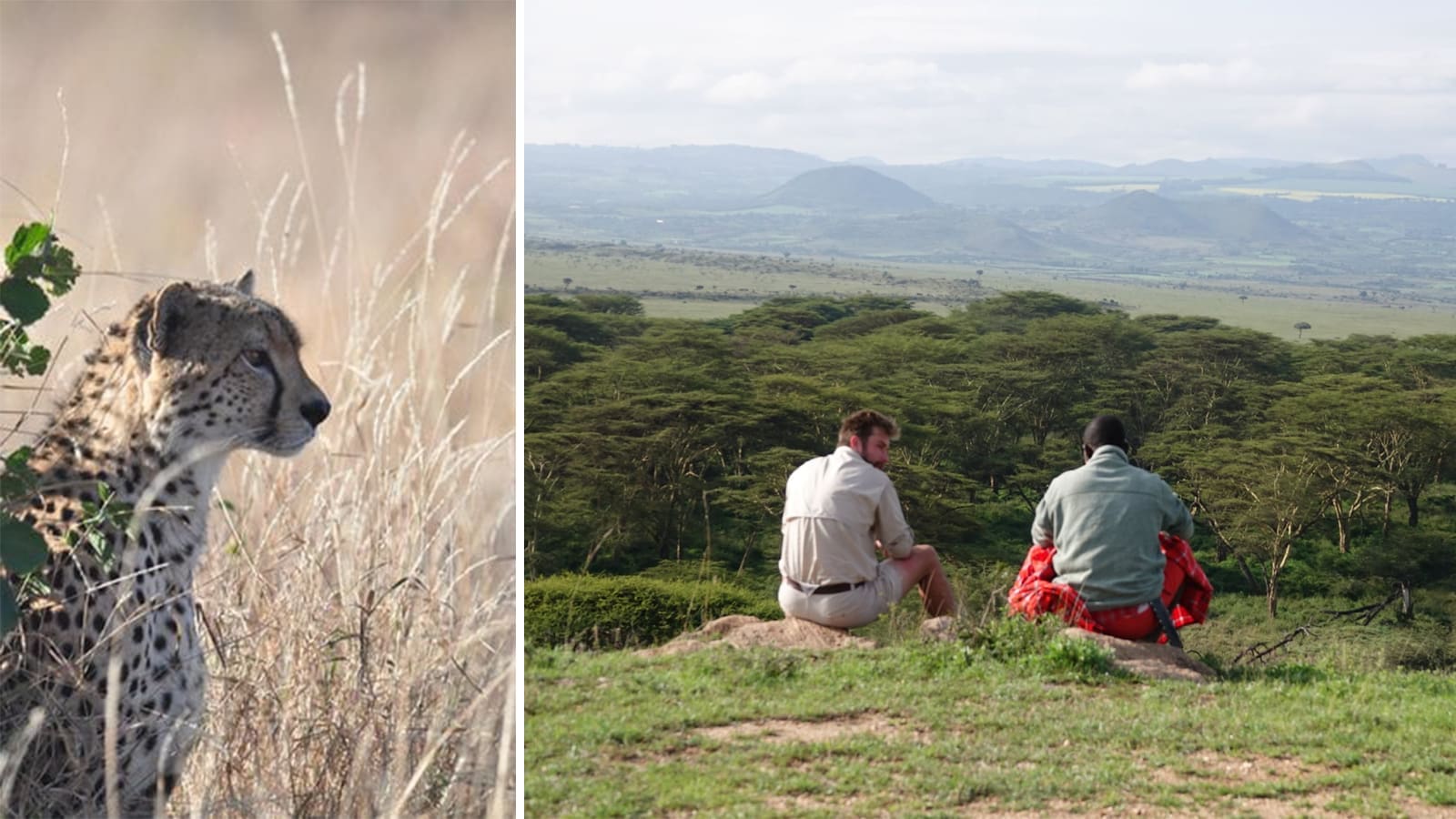

Special cheetah sighting; Miles with their guide James
Alison Nolting in Kenya and Tanzania #3 – Ol Pejeta Conservancy & Solio Ranch
The journey has continued southward through Laikipia into two additional private conservancies, Ol Pejeta and Solio. Ol Pejeta is home to the last two remaining northern white rhinos on the planet, plus the Jane Goodall chimpanzee sanctuary.
Alison filled her two day visit taking morning, afternoon and night game drives. She was lucky enough to see over 40 black and white rhino, cheetah, lion on a recent buffalo kill, plus an exciting sighting of a striped hyena. The Ol Pejeta Bush Camp was is a perfect location!
Alison then continued to Solio Lodge, which is home to the highest concentration of rhino in Kenya. On both an afternoon and morning game drive She saw 40+ rhino on the open plan behind the lodge. She also took a day into the Aberdares, which topped up some interesting species like giant forest hog, forest elephant, Sykes and Colobus monkey. Also this is a birding paradise where she was table to tick off Hartlaub’s Turaco and Alpine Chat. Solio was a delightful retreat for the two days with first class hospitality and a reminder of sustainable tourism and conservation at its best!
Thanks for following the safari, with some further pictures shared below from the past four days. Including Miles and Alison at the equator (latitude 0000!).
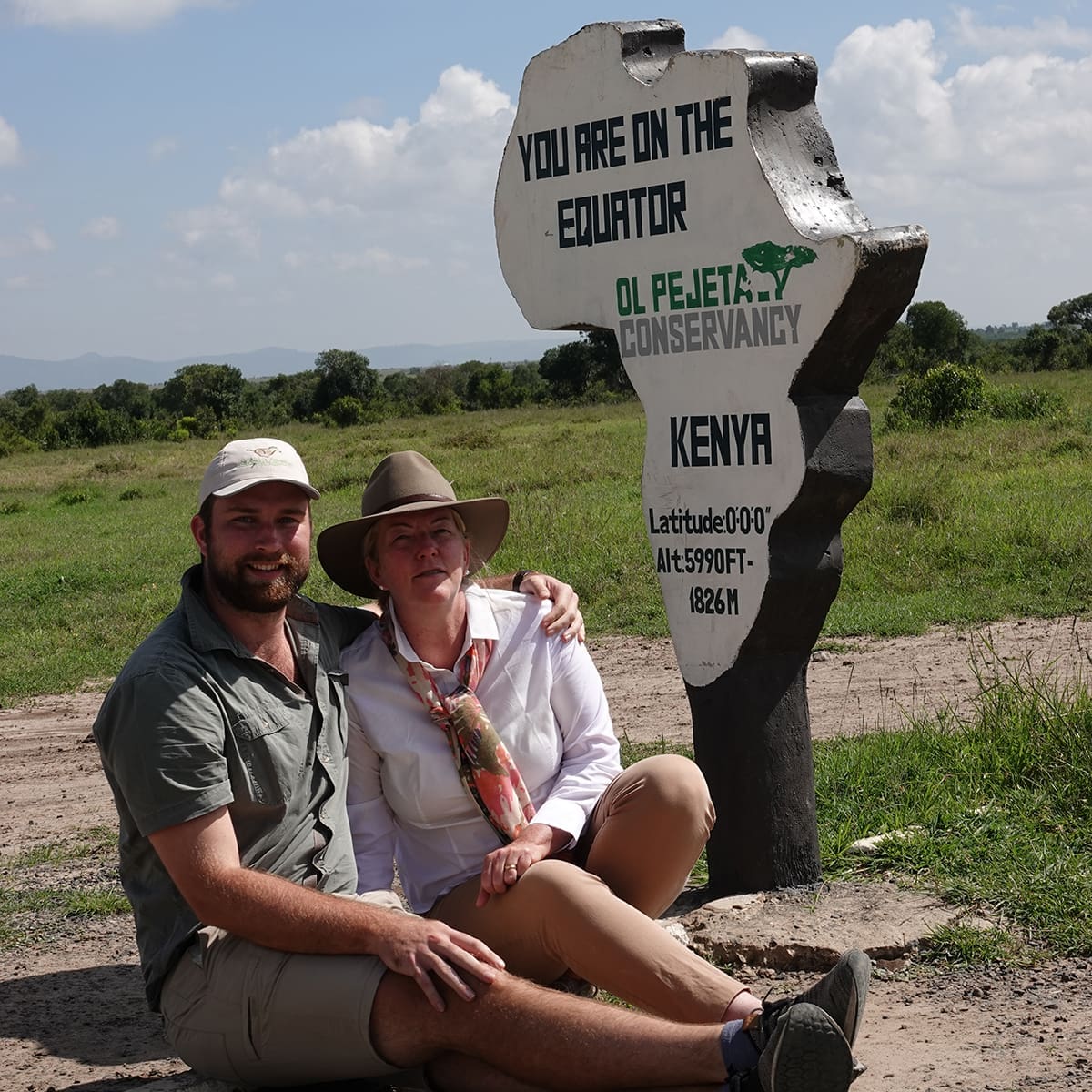

Sitting on the Equator; 7500 miles from Washington D.C.
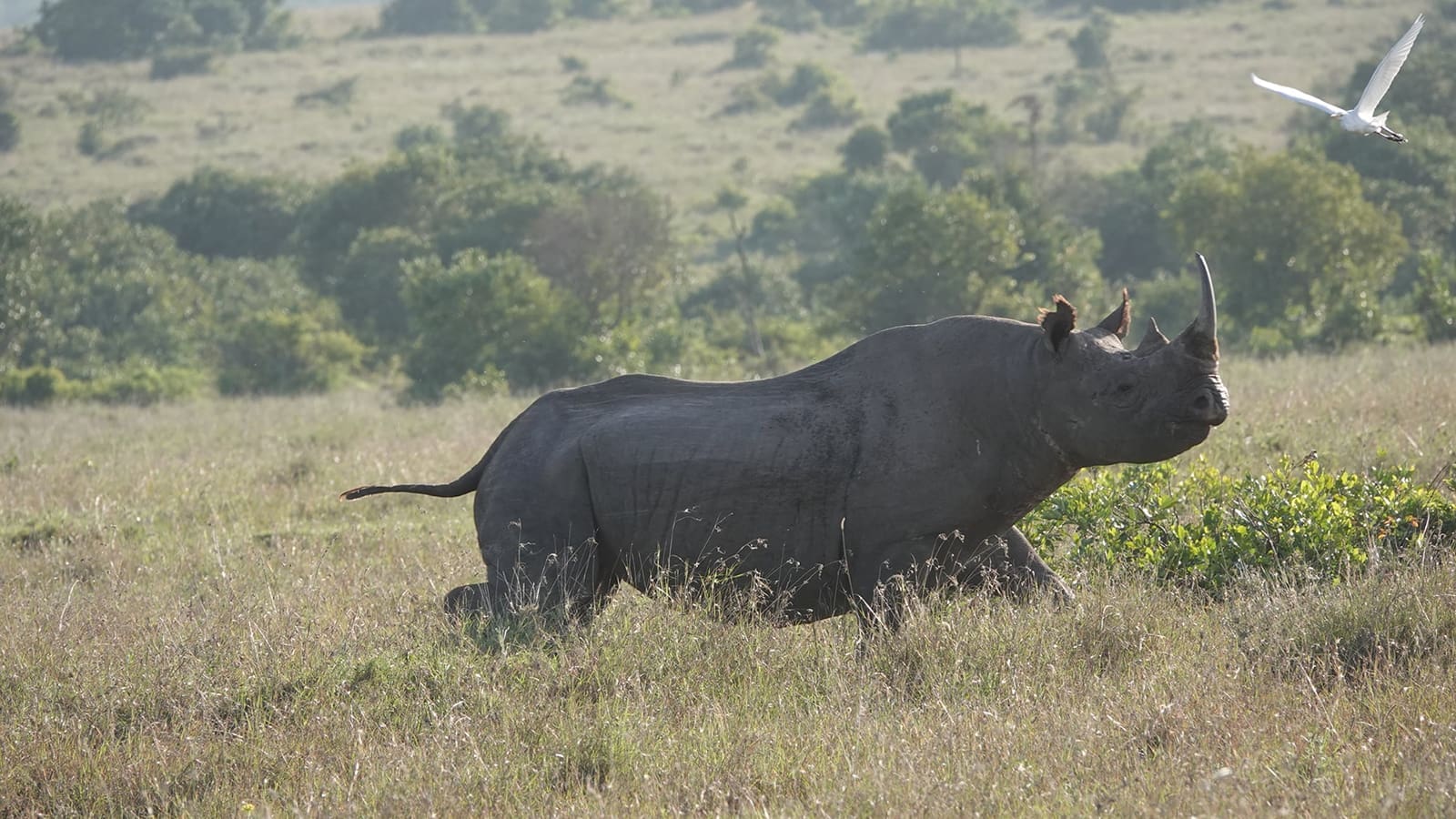

One of many black rhinos seen at Ol Pejeta
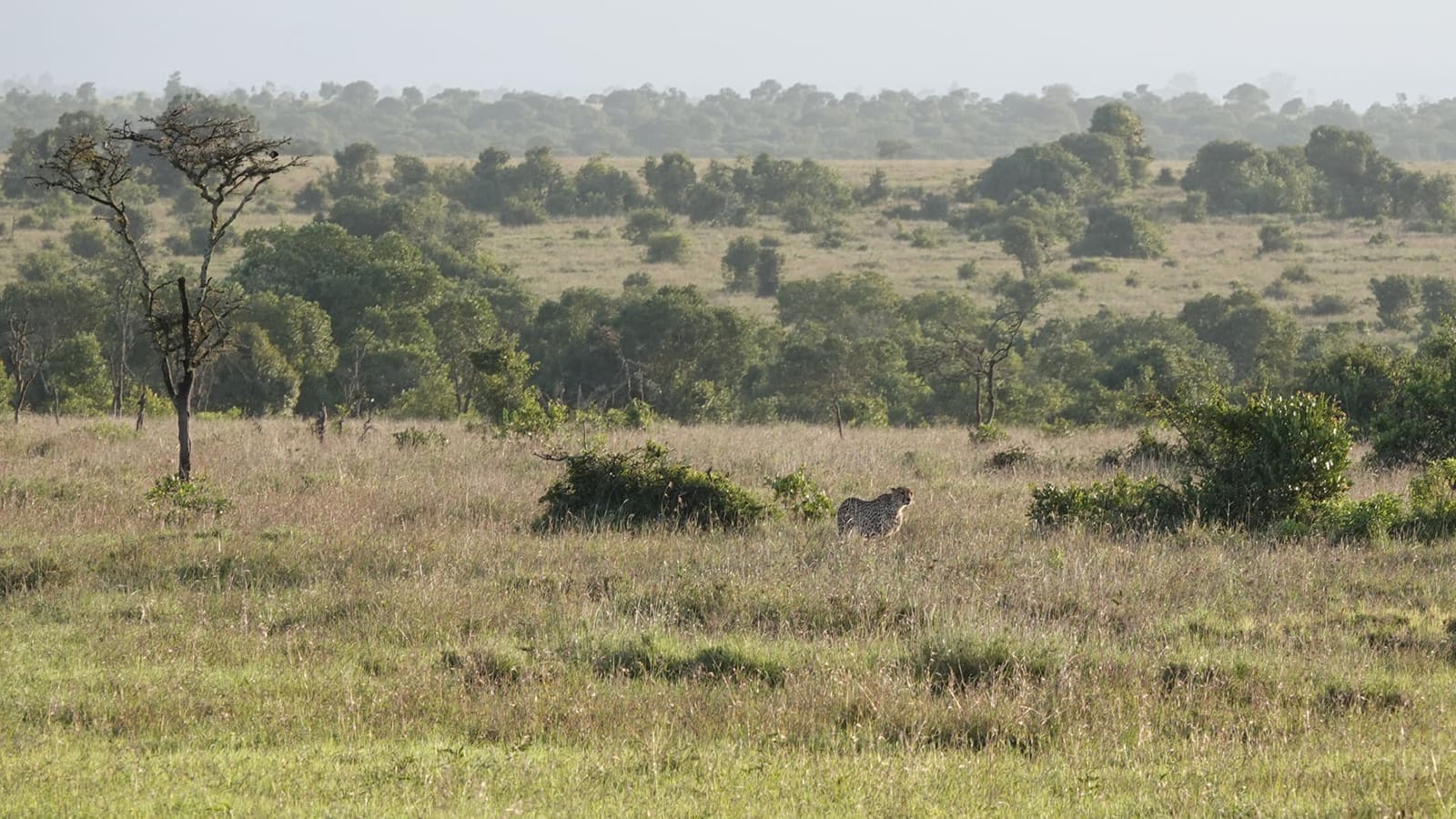

Very lucky to see a cheetah on an early evening hunt
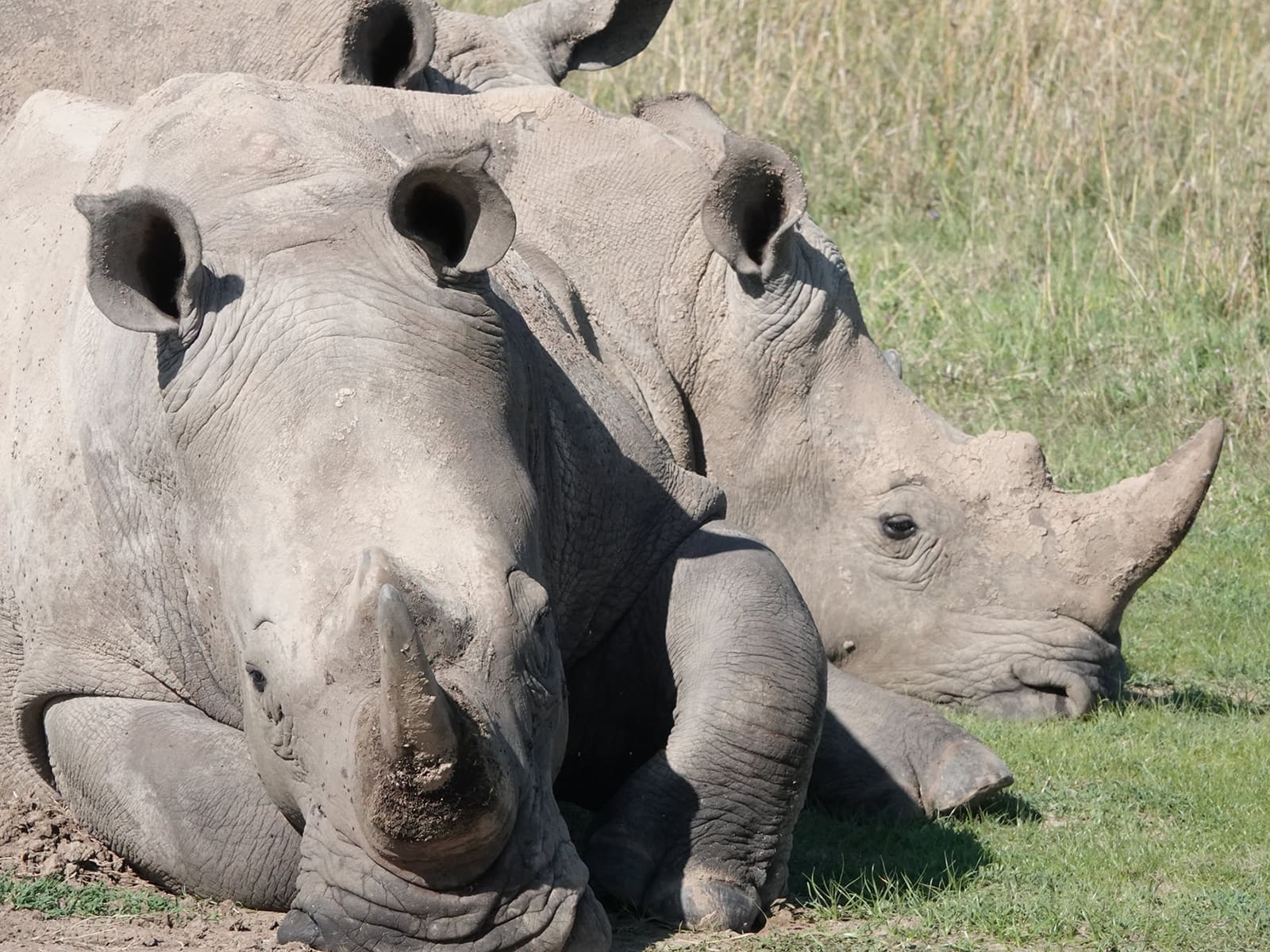

White rhinos enjoying a mid-morning snooze
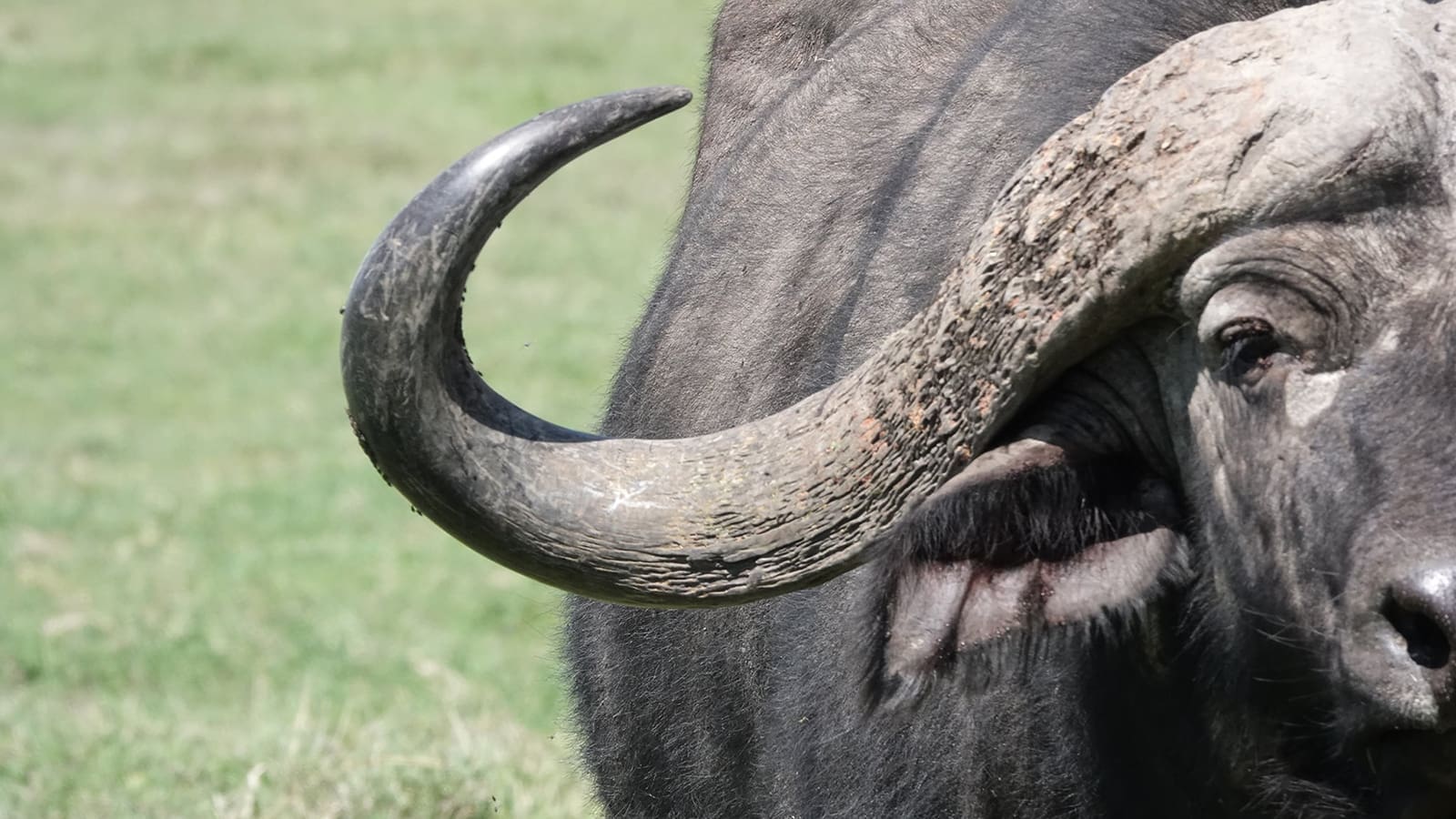

Impressive horns on this buffalo
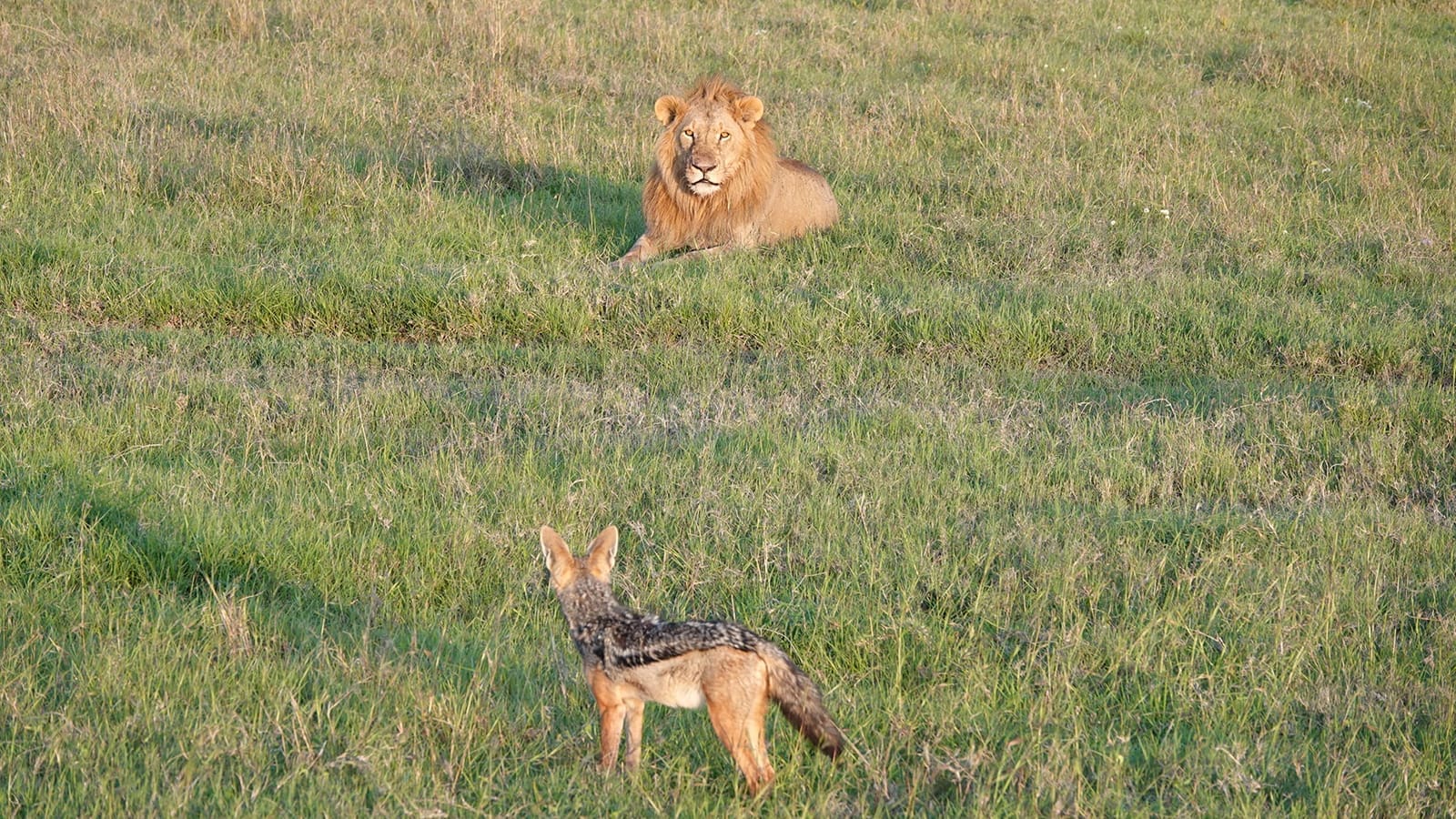

Cheeky jackal trying to get some of a lion’s kill
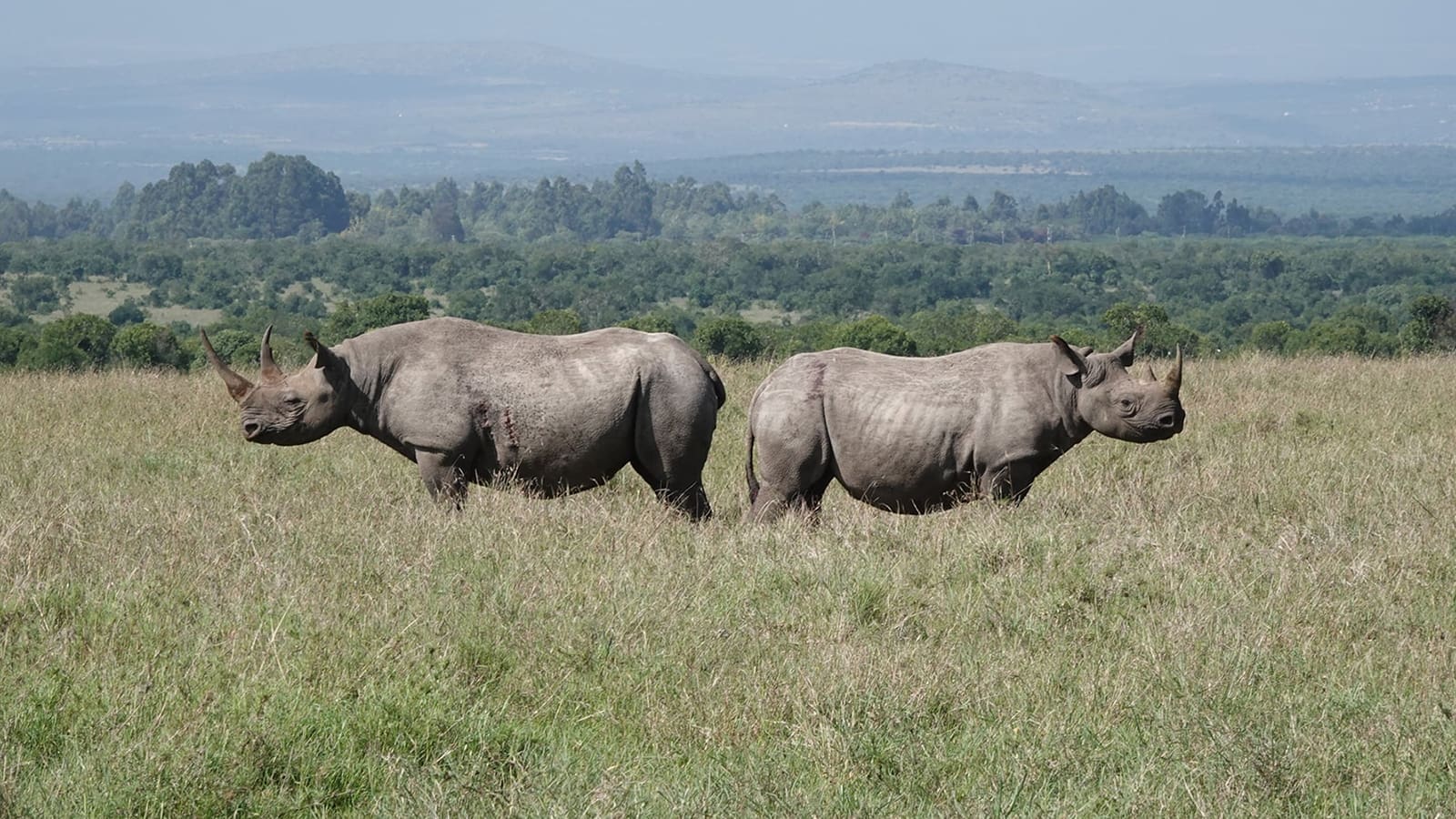

A mirror image!
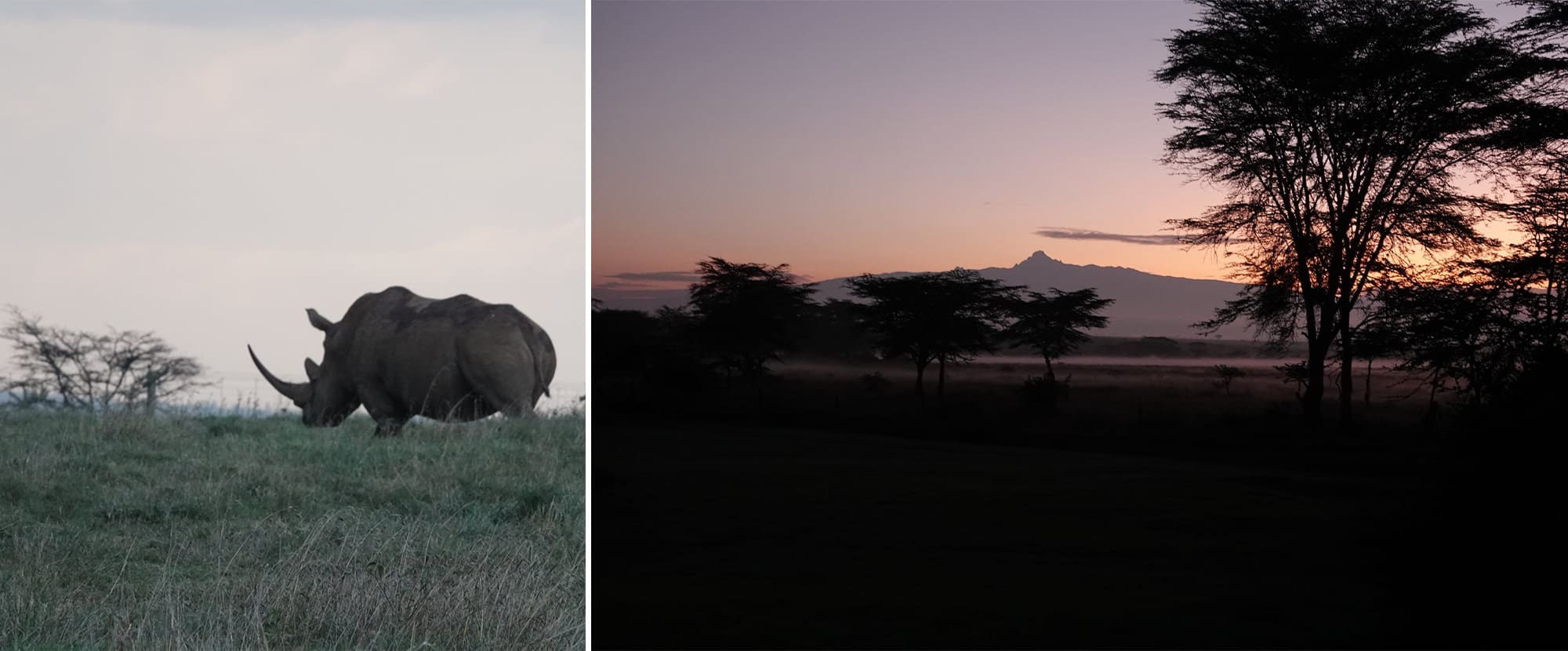

Encountering a white rhino on an evening game drive; sunrise from Alison’s room
Delightful evening night drive at Solio
Alison Nolting in Kenya and Tanzania #4 – Maasai Mara & Naibosho Conservancy
Alison and Miles have finished up their safari in Kenya with four fabulous days in the Maasai Mara visiting Naibosho Conservancy. Their base has been the stunning new Mara Nyika Camp.
Alison was last in the Mara in 2017 in June, so it has been interesting to compare the season difference now traveling in November. The grasses are still short with new shoots of green grasses plus the acacias have new leaves and blooms. Plenty of wildebeest and zebra have moved into the conservancy.
Below are a few of their photos showcasing the power of predator sightings in the Mara, plus some other interesting species. What a great ending to a safe and healthy safari! Conservation and community working together are the future to preserve Africa’s iconic wildlife.


(L) The interaction of vulture and jackal and hyena after the lions had moved off (R) Majestic giraffe
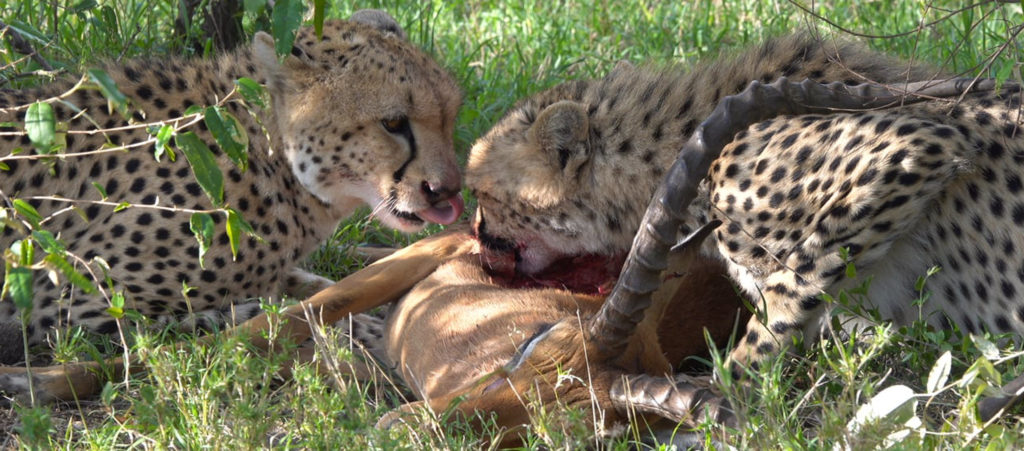

Another amazing sighting of mother and son cheetah
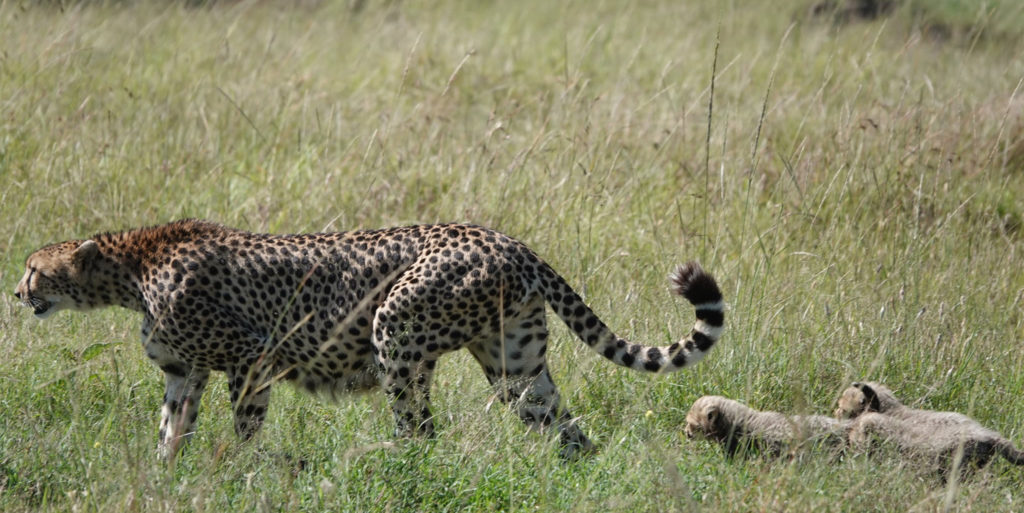



(L) Miles and guide Dixon deep in discussion, could take a while! (R) The rivers are full of water at the moment with lots of good rain. Happy hippos!
Alison Nolting in Kenya and Tanzania #5 – Tarangire
Wishing you all a belated Happy Thanksgiving!
Alison has migrated from Kenya into Tanzania safely. Her next destination was Tarangire, where she stayed at two luxury properties; Mpingo Ridge Lodge inside the park, and Little Chem Chem camp in their own private concession adjacent.
A visit here is definitely traveling through the land of elephants. Additionally, Tarangire is in full swing green season with lush green grass and clear blue skies with some afternoon showers. Alison is feeling grateful to be on safari and spending time with the gracious hosts and guides in the lodges and camps. They are all ready to receive guests over the holidays and into the early months of January through March if looking for a getaway to spend time in the bush. Alison is happy to discuss the differences between Kenya and Tanzania travels and health protocols.
Below are some further photos highlighting the fabulous wildlife to be seen. Many of the sightings are with no other vehicles which is an added bonus!


(L) Arrival in Tarangire – the iconic baobab trees with new leaves and white blossoms (R) A mother ostrich and her flock of chicks


(L) Baobab fruit – cream of tartar seeds inside (R) The dung beetles are everywhere, scurrying busily to and fro with their fresh dung balls!
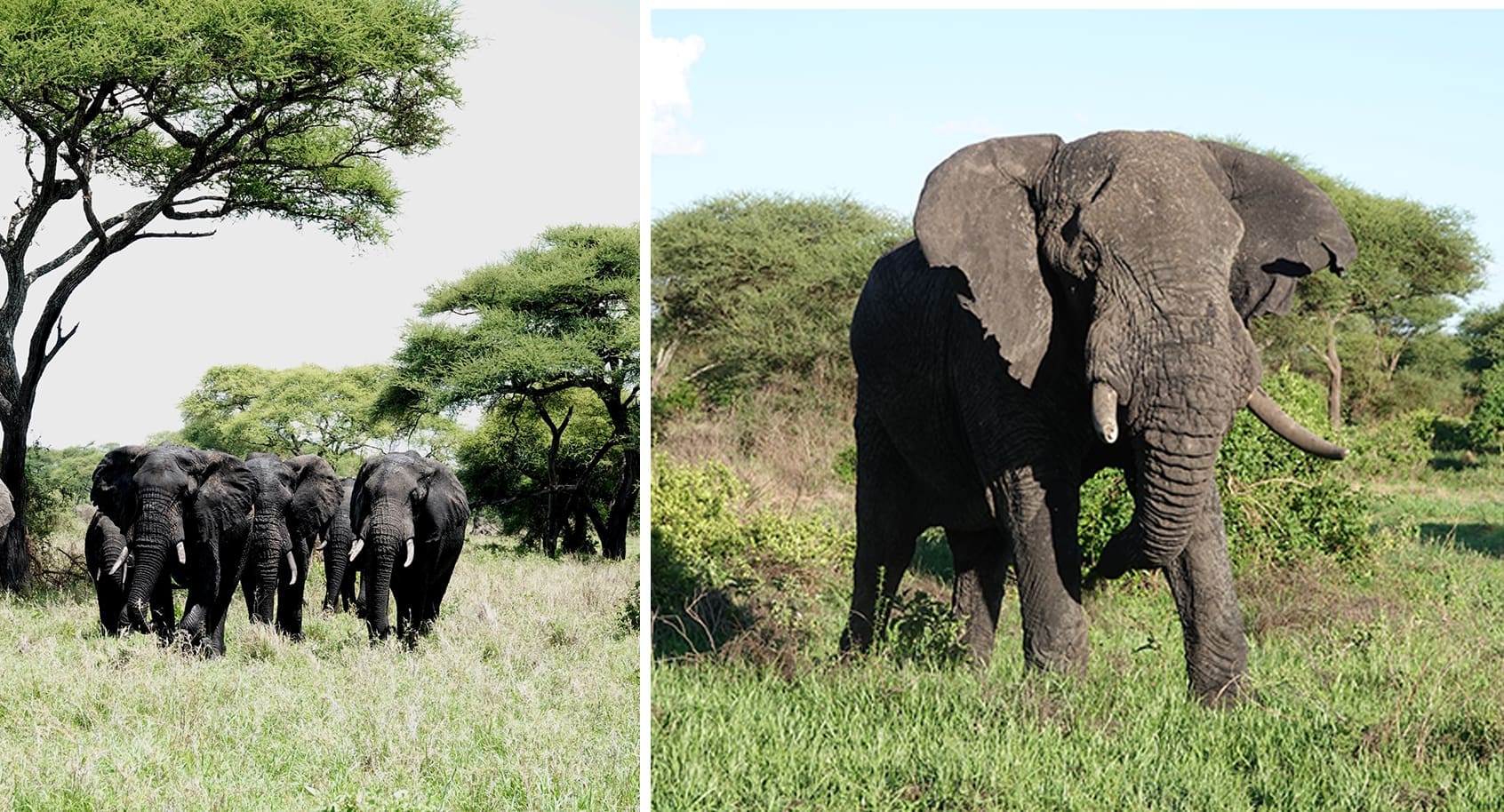

And then when we got onto the Chem Chem concession, it was all these majestic gentle giant elephant bulls
Alison Nolting in Kenya and Tanzania #6 – Ngorongoro
Greetings from Ngorongoro Crater. It is hard to believe that this is my sixth visit over the last 30 years and it is like coming home to the Garden of Eden. This is a first time experience during the short rains and again it has been full of nice surprises! The vegetation is lush green and the wildlife all very frisky.
Though named after the famous Ngorongoro Crater (the world’s largest unflooded, intact caldera) the crater floor itself only occupies 3% of the entire 3200 mi² (8288 km²) conservation area. Rising 1200 to 1600 feet (365 – 490 m) off its floor, the grasslands, stream-fed swamps and forests of the crater floor can be reached after a 30 minute drive down from the crater rim.
There are many attractions outside of the crater, including Olmoti and Empakaai Craters, Ol Doinyo Lengai, Gol Moutanins, Nasera Rock, OlKerian and Oldupai Gorge (the latter is the site of some of Mary Leakey’s archaeological discoveries), and the Shifting Sands (formed by Ol Donyo Lengai’s volcanic ash).
Below is a variety of photo highlights that display the wide range of sightings and activities from a two day visit to Ngorongoro Crater.


(L) Daybreak and sunrise from Entamanu Private Camp over Ngorongoro Crater (R) And the following morning, a gentle blanket of cloud floating over the Crater


This was the sighting of the day! First we say two vulture flying quite low across the open grasslands, followed by two or three golden jackals. Soon after one vulture had a crash landing into this tree. It broke up the dialogue from the guide who had been saying it was typical behavior for jackal to follow flying vultures as they wait for them to find the morning meal. However the guide quickly observed the vulture must have not had enough thermal temperature to keep flying as it was still quite cold and had found the nearest tree to land in. The startled secreatary bird popped up hidden from his nest and both had a stare off for a while, and then comfortably sat together for a while longer!


(L) The golden jackal are a nice new species to see in the crater floor and are the main predators of the flamingo (R) This Augur Buzzard was the main raptor bird we saw
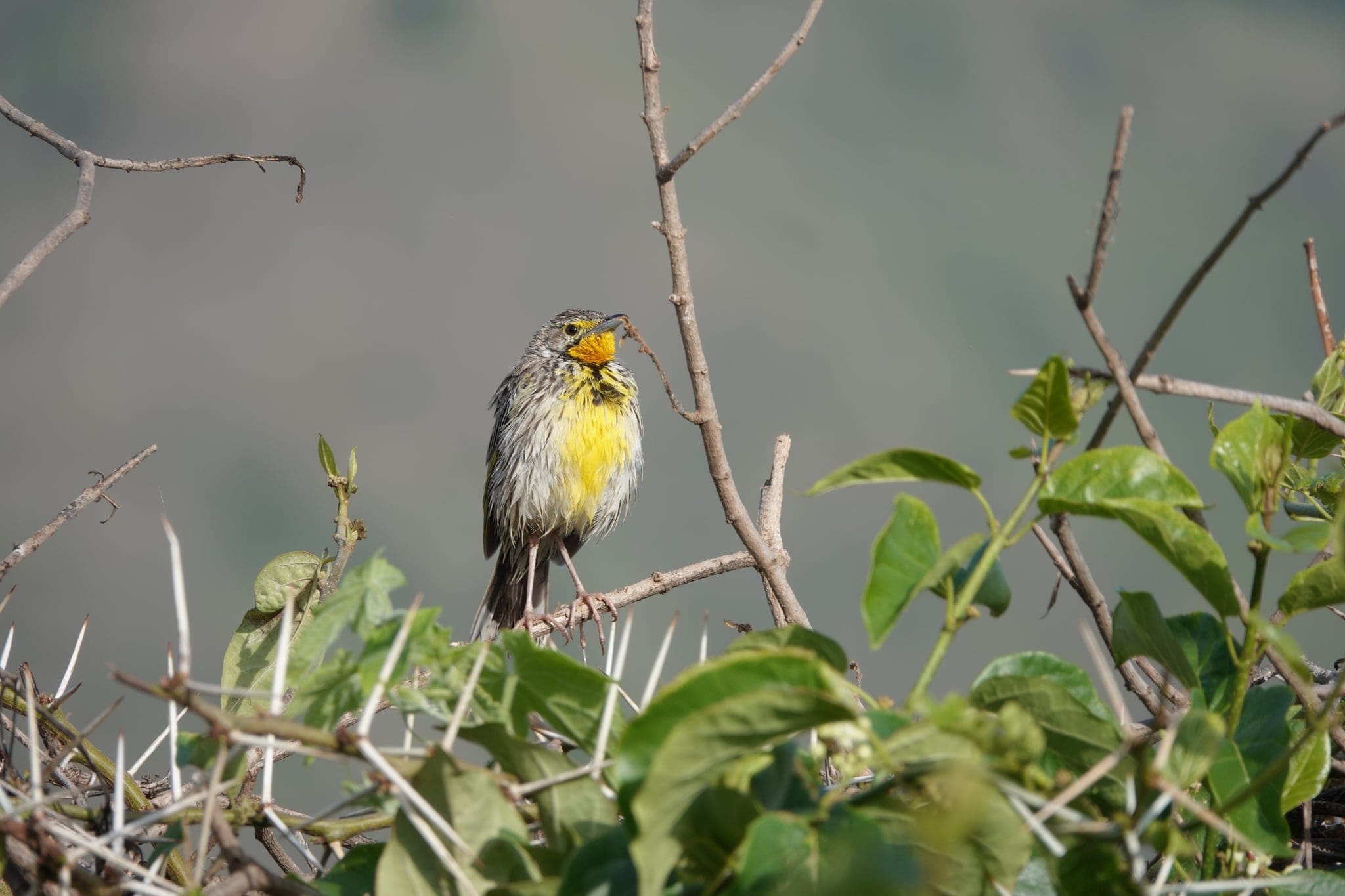

The Longclaw was giving happy bird songs all morning around the crater
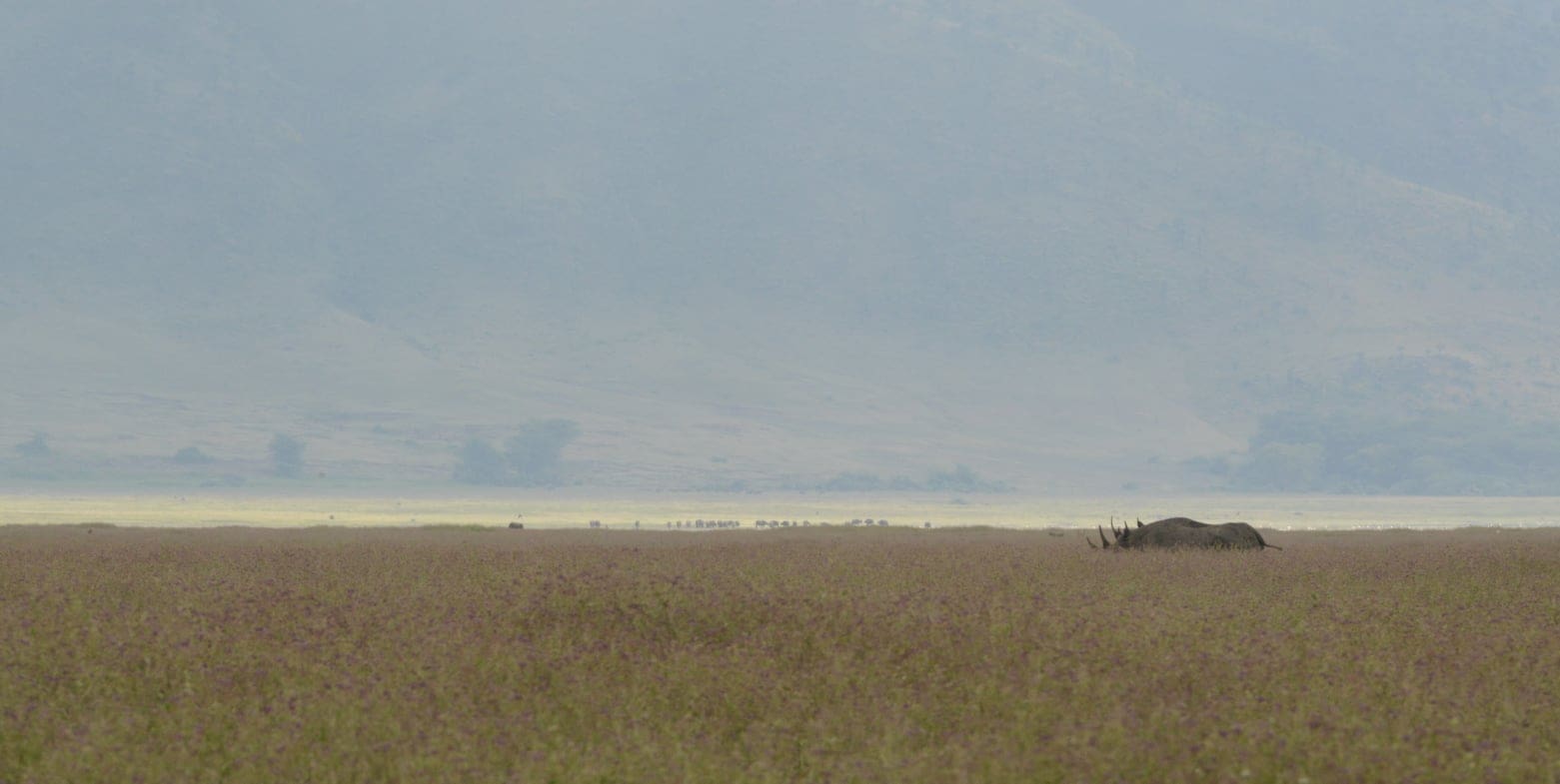

Very luck sighting to see Black Rhino far off in the distance. Part of the Big Five wish list


(L) The rains bring a abundance of youngsters. A bounder of warthog (R) A final view back to the Crater Floor
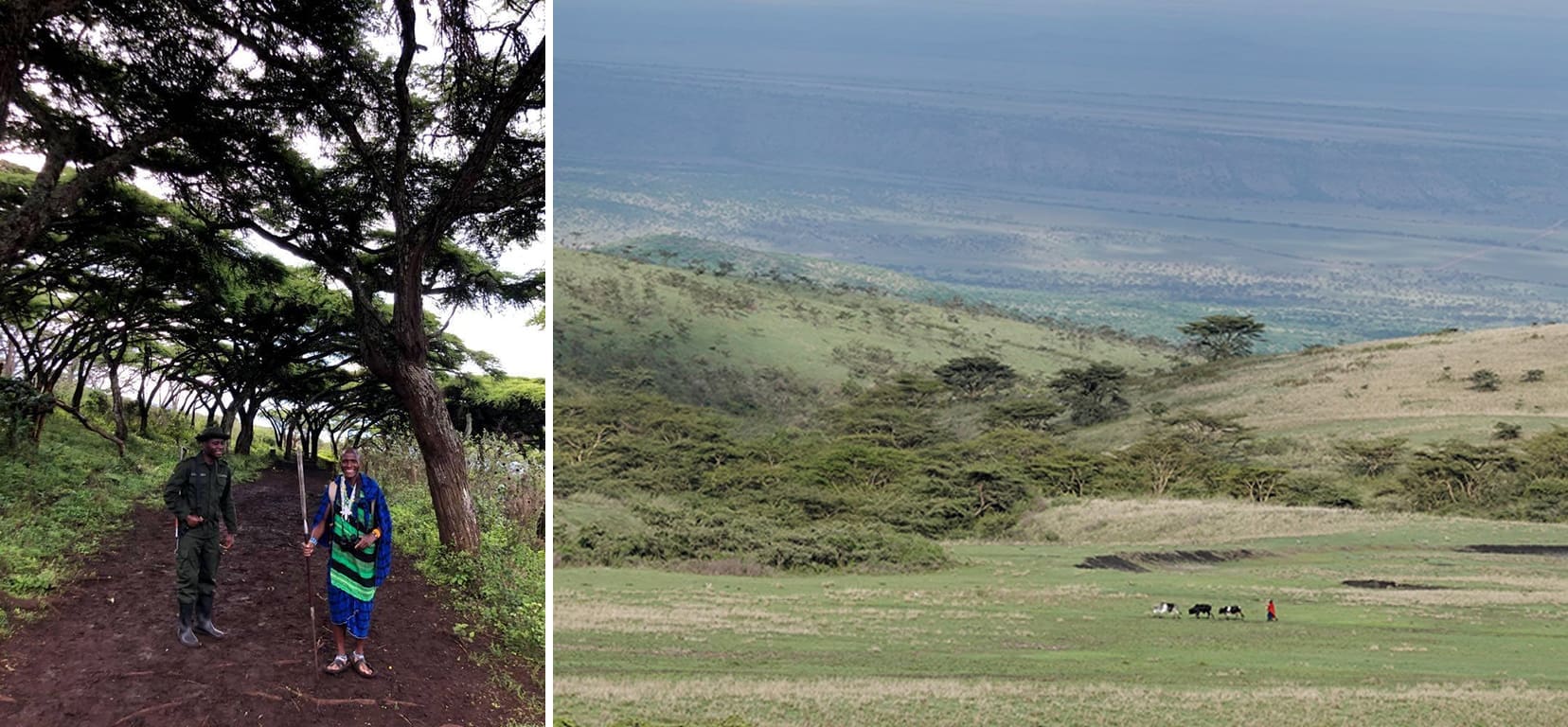

(L) From Entamanu you are able to also take a few other activities which include a lovely afternoon walk in the Acacia Forest with a professional Masai guide (R) The community are in partnership with the Ngorongoro Conservation Concession area. An authentic cultural experience seeing the Masai herders


(L) Visiting the Manyata villages in the area is also arranged from Entamanu (R) Departing Ngorongoro Crater to the Serengeti you pass through Olduvai Gorge where you can visit the museum
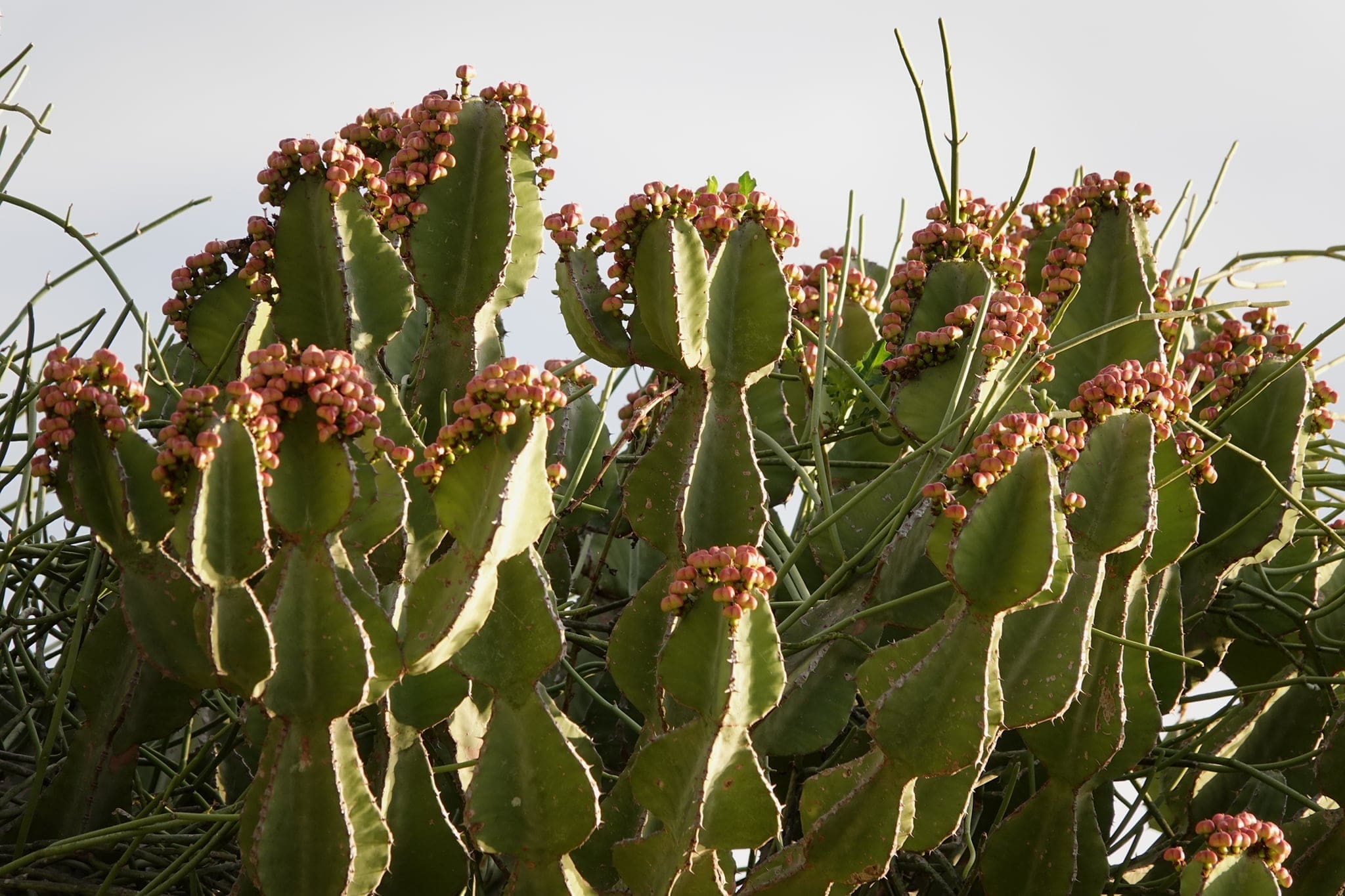

With the abundance of rainfall, the Euphorbia are in full bloom. There is plentiful food for all widlife and birds! Cannot wait to see what Serengeti has in store
Alison Nolting in Kenya and Tanzania #7 – Serengeti
The amazing safari journey has finished with some feel good “African massages” out on the southern Serengeti Plains. The rains of November/December have provided sought after grasses with the wildebeest herds arriving like clockwork in their yearly migration movements!
You can still plan a last minute getaway for Christmas Week and would recommend two great locations to stay at Lemala Nanyukie Camp and Mwiba Lodge. February is calving season for the wildebeest and many predators like cheetah will be following the herds and will provide some great wildlife sightings.
In the Maasai language, Serengeti means “endless plains,” a very appropriate name for the 5700 mi² (14,763 km²) national park that stages the Great Migration. This awe-inspiring phenomenon features approximately 1.3 million wildebeest, 200,000 zebra, and 250,000 Thomson’s gazelle, and several other kinds of big game, smaller mammals and predators.
From December to April, most migratory animals are in the southeast region of the park. Below are some final photo images from one of my favorite parks on earth for both the wide open spaces and the frequent predator sightings!
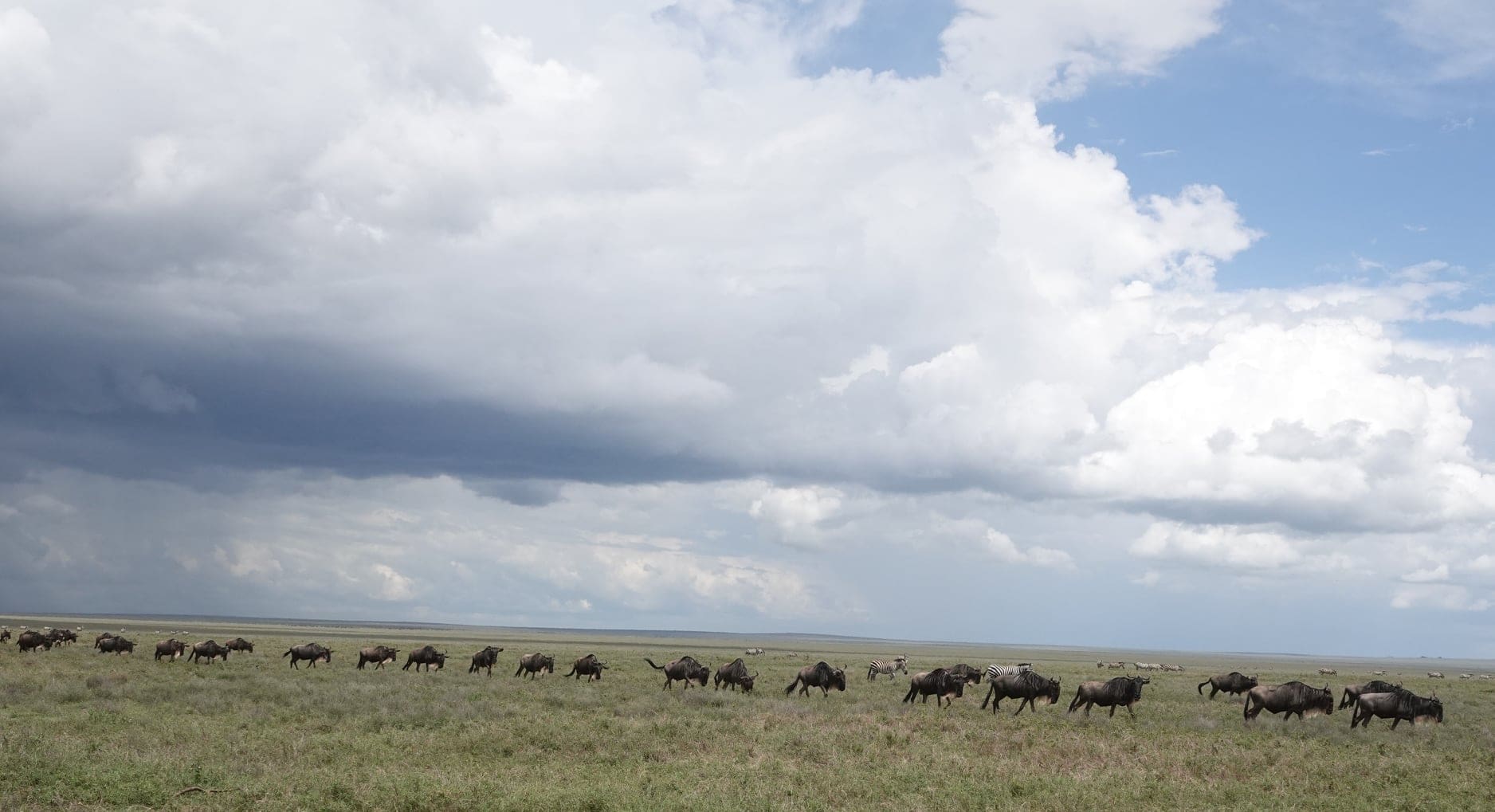

The beginning herds of the wildebeest migration in the southern Serengeti plains
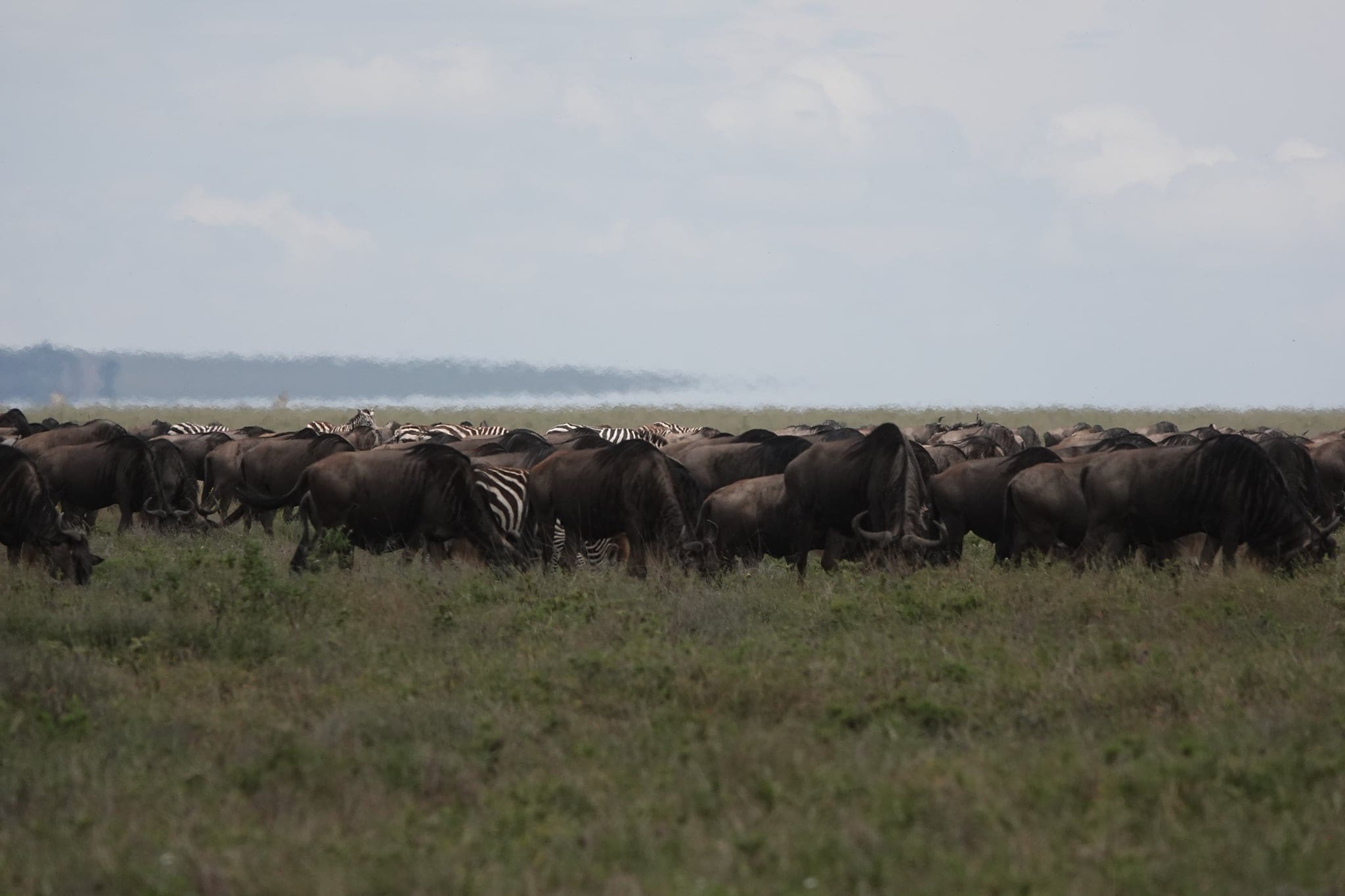

And the zebra too


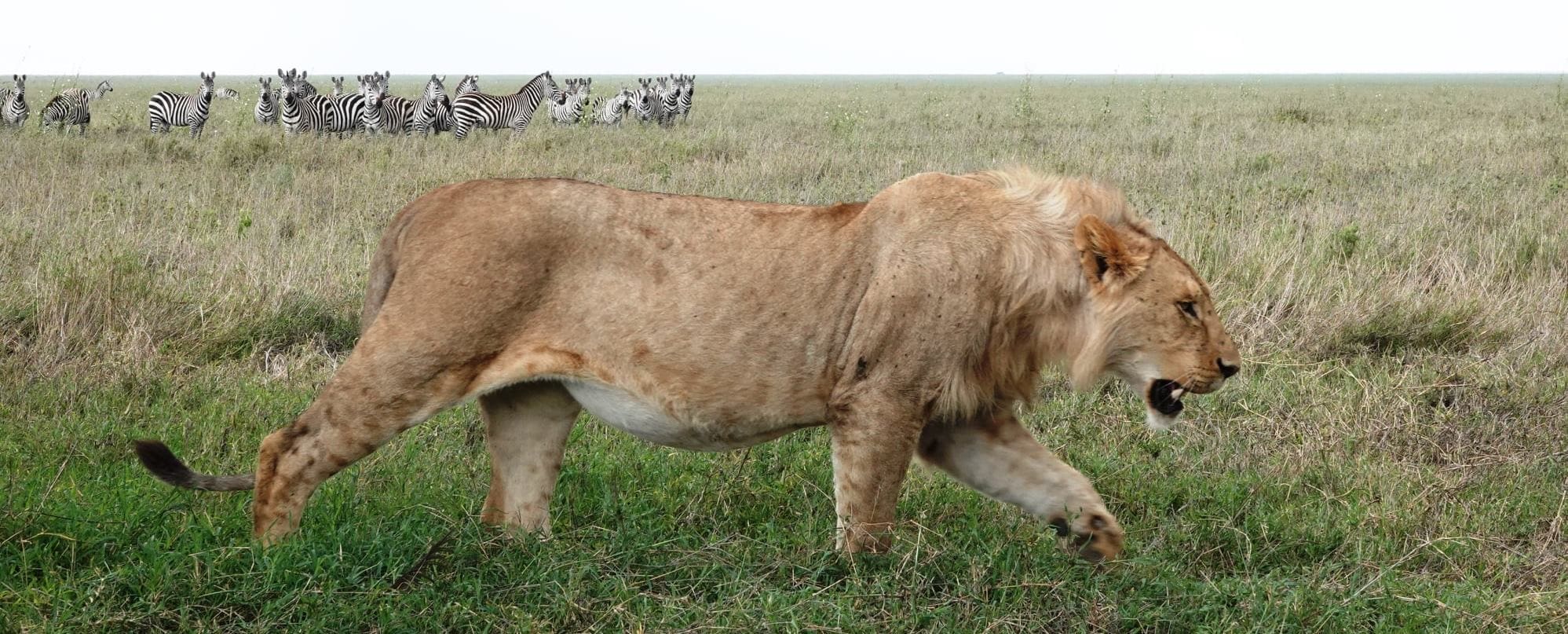

This lion as part of the Simba kopjes pride
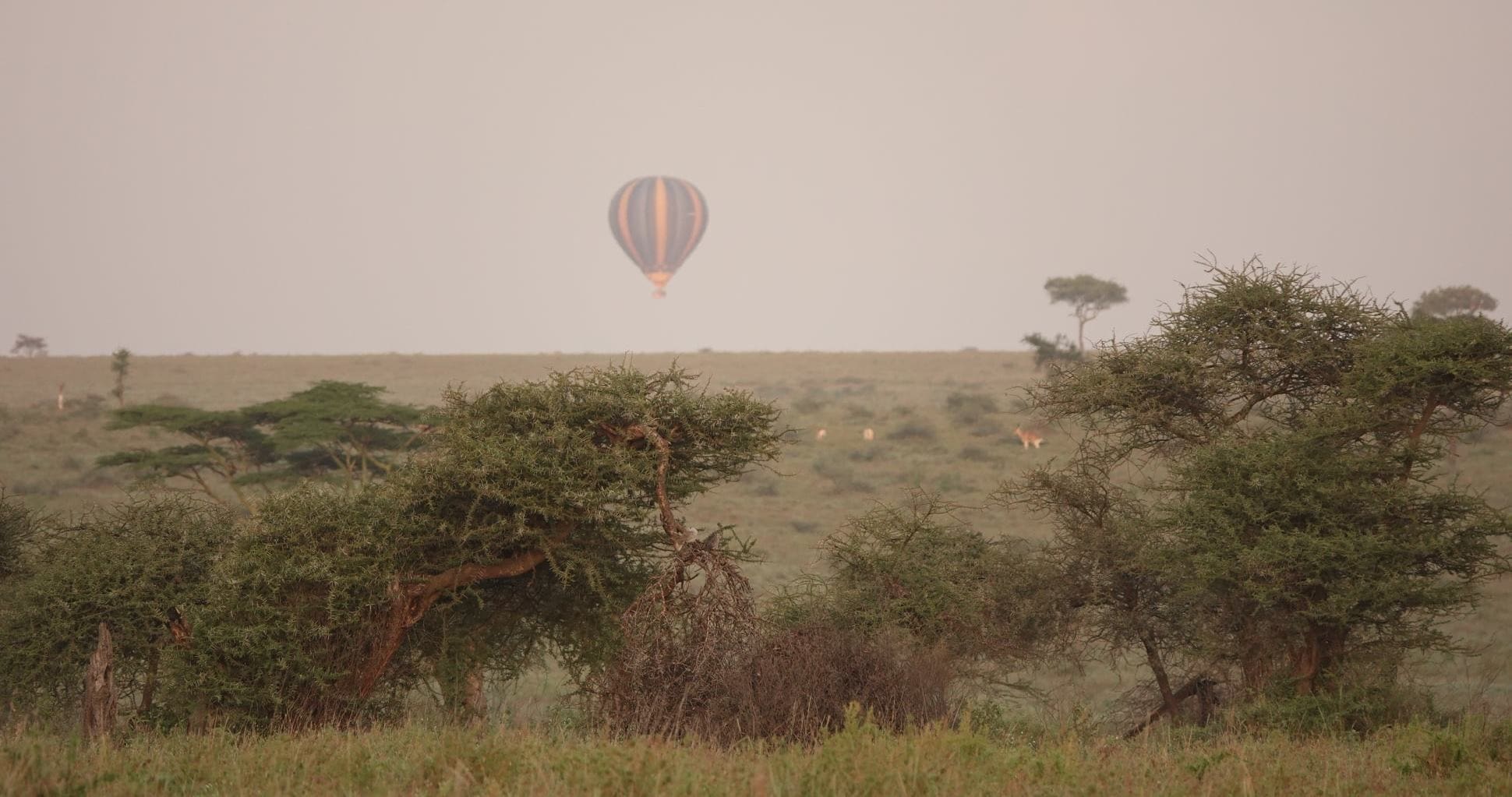

A popular activity is the hot air balloon ride in the early morning. An amazing sight is to see the migration herds from an aerial view


(L) The landscape of the single acacia and fig trees provides sanctuary for leopard (R) And the tell tale sign of the hanging tail gives you a rewarding sighting
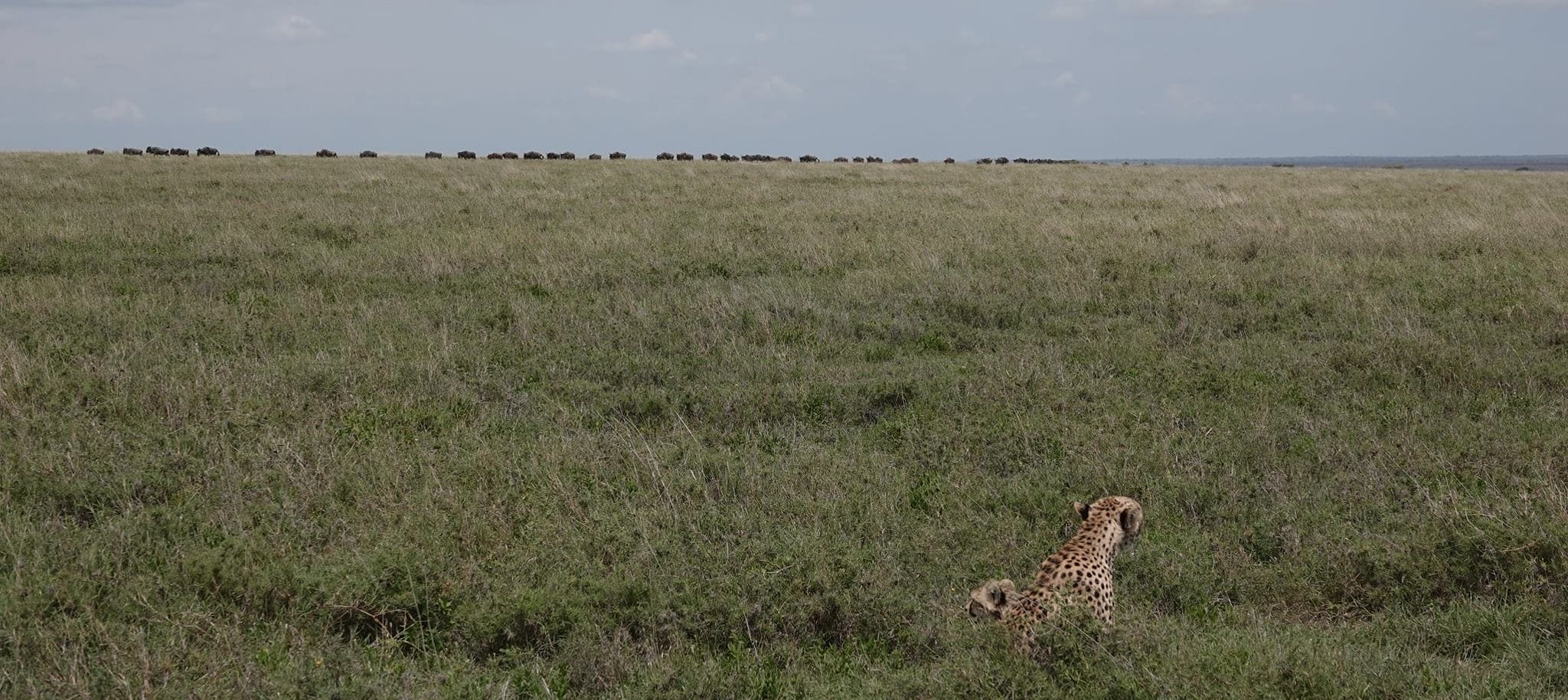

The Namiri Plains is a haven for cheetah all year round. Our Nanyukue guide found us this mom and her 3 cubs


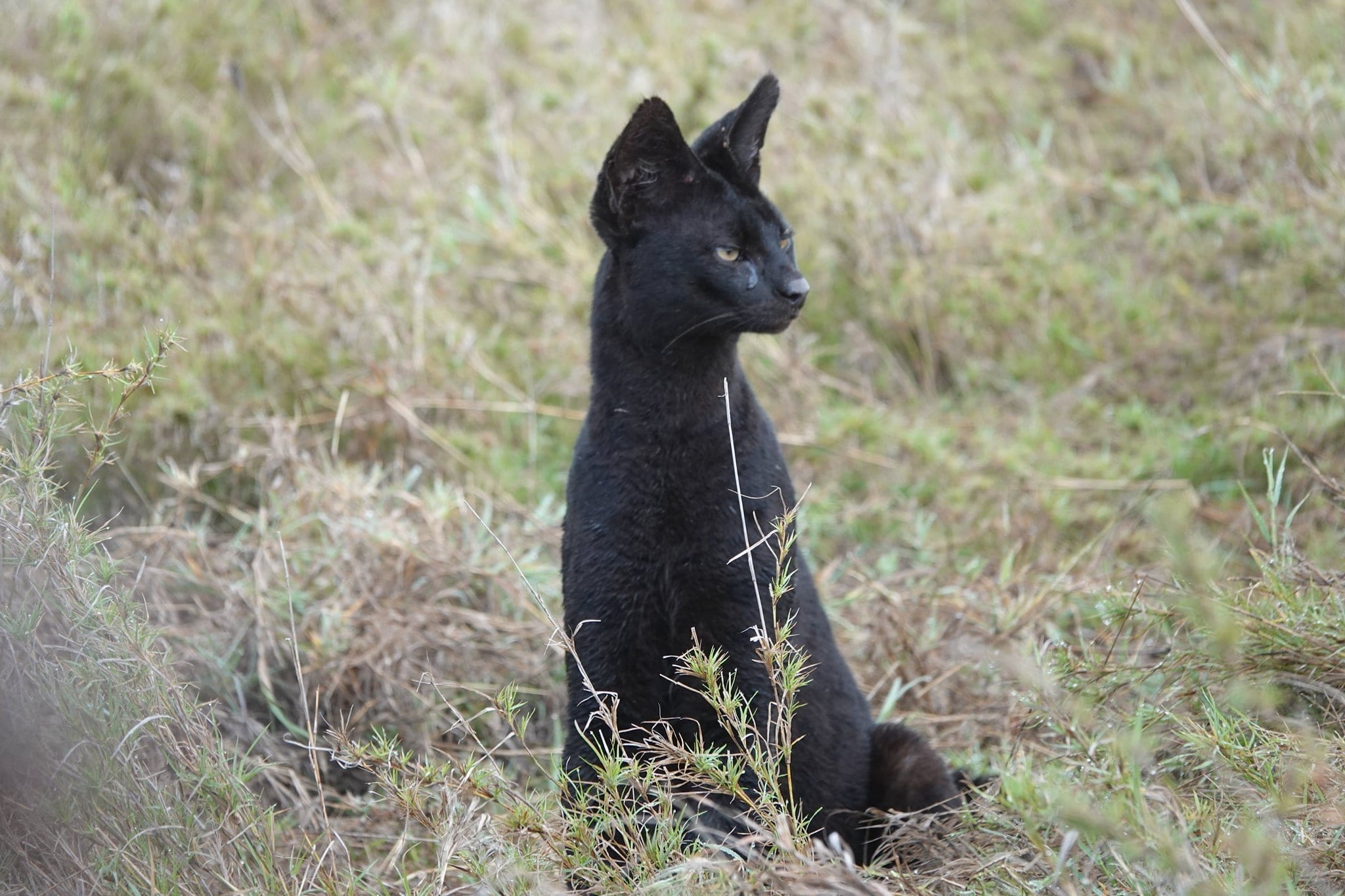

And the highlight was finding the black serval cat! I feel so fortunate to be one of many travelers who continue to see the father who has this melanistic coloring. He has one kitten offspring at present with same color.


He was very active hunting for field mice
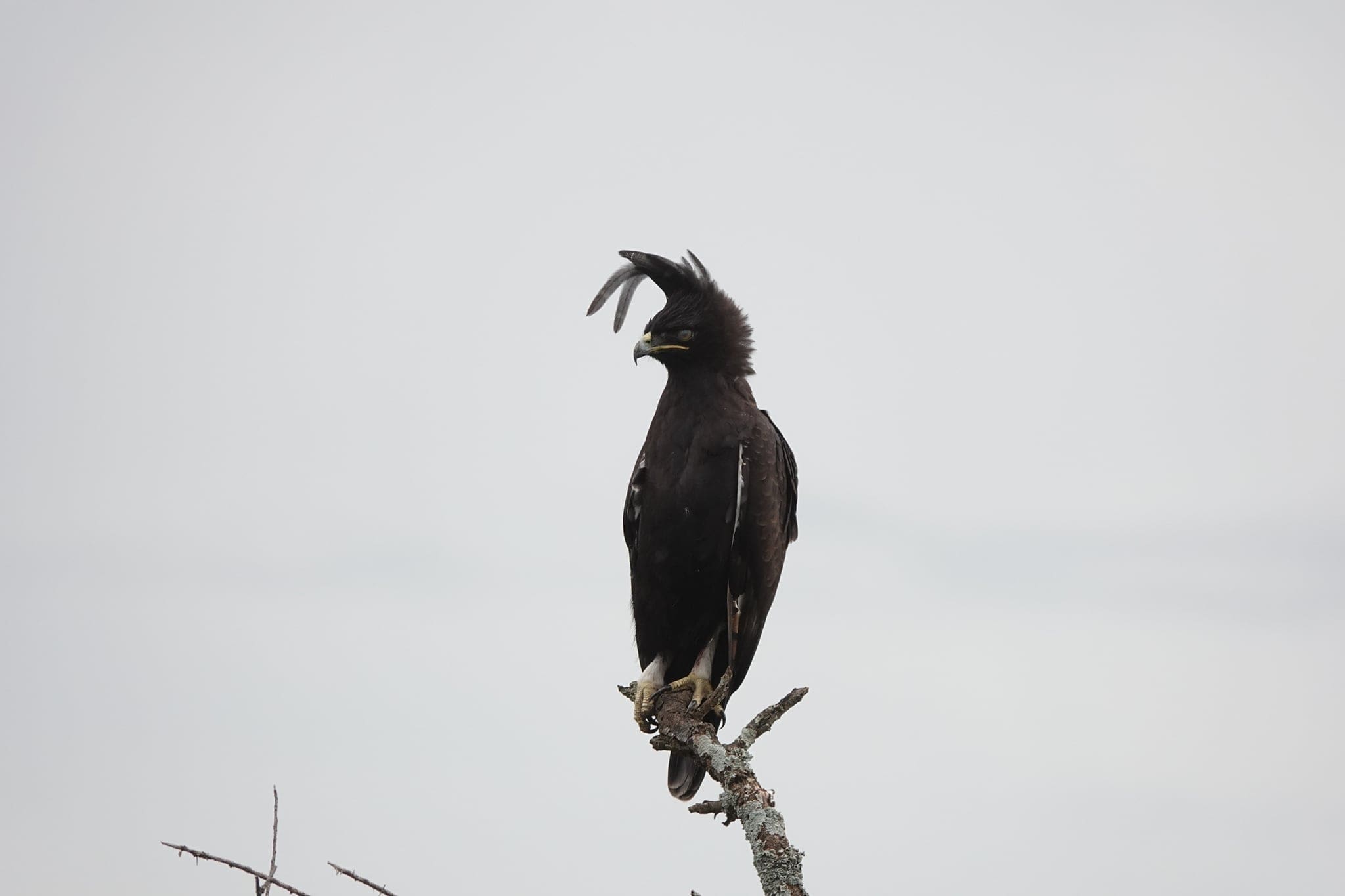

The crested Eagle, one of my favorite birds
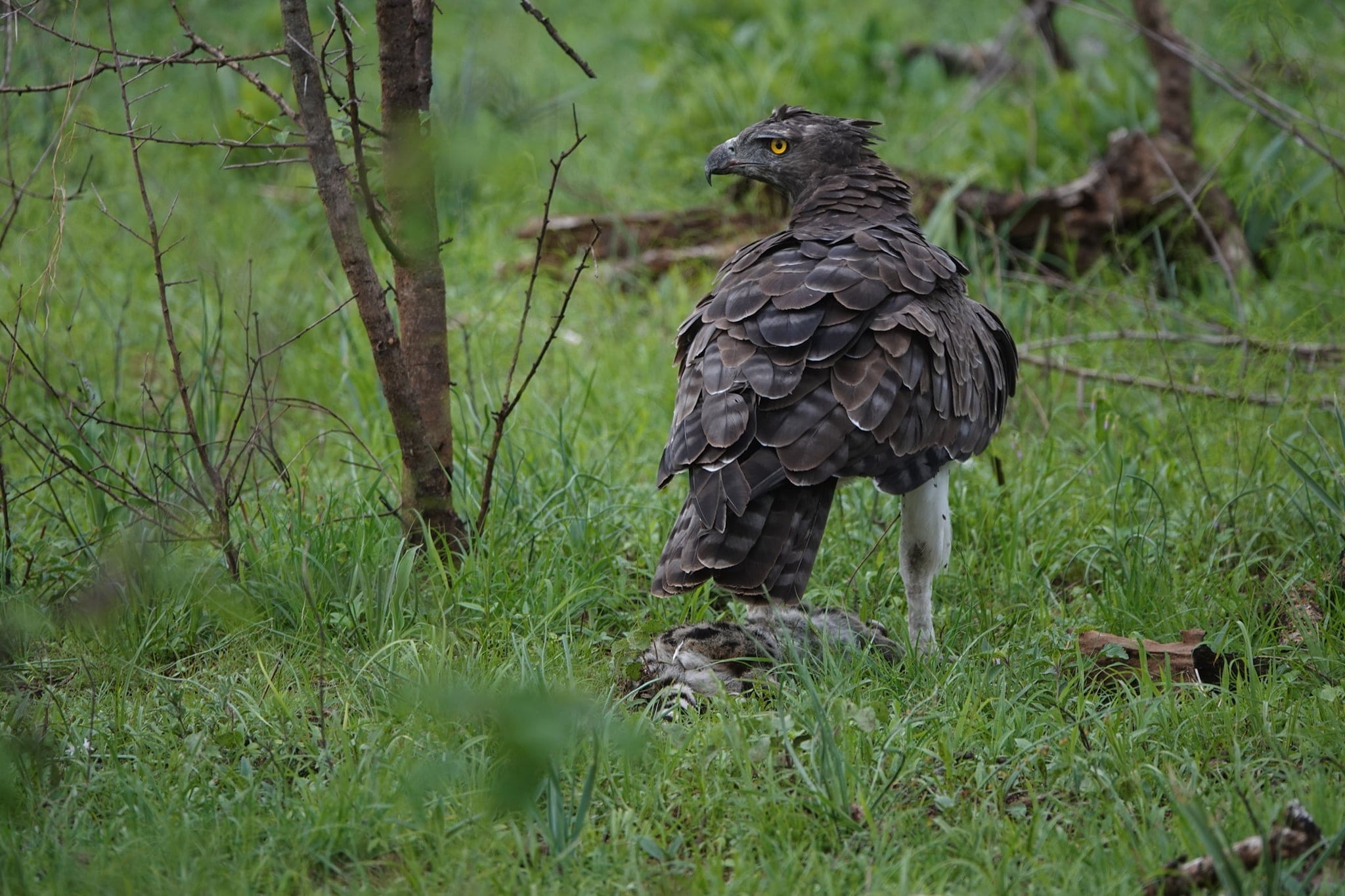

And a lucky sighting at Mwiba – a martial Eagle and a genet cat that was caught. Well done to guide Ebenezar for this incredible find!
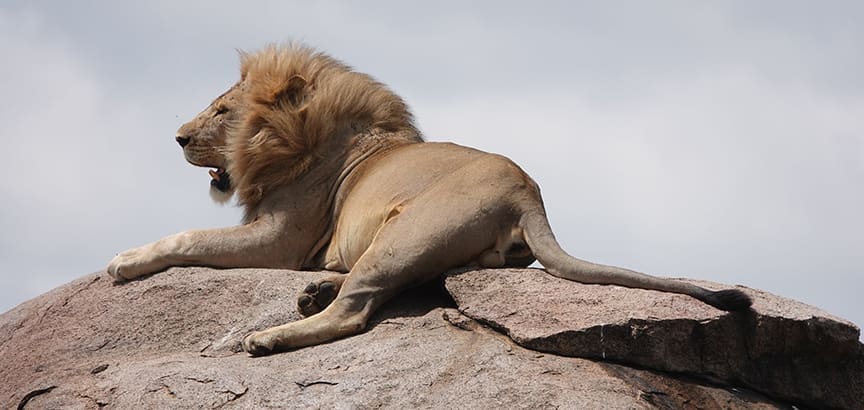

This male lion is residen around at the Research kopjes. He was magnificent!
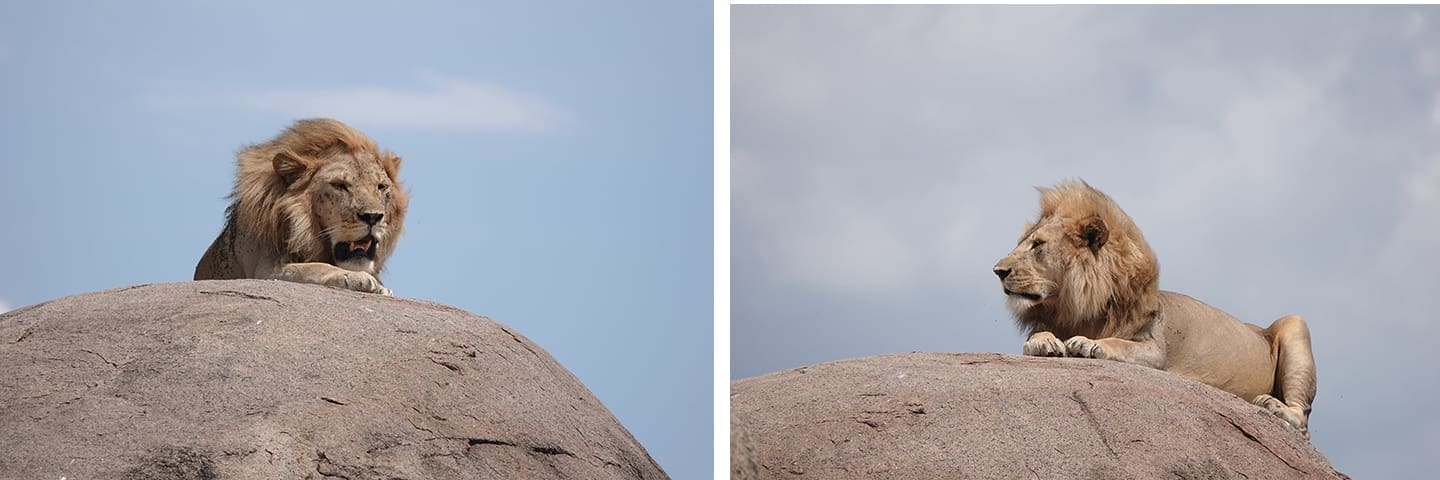

The wind blown hair is showcased in the handsome mane
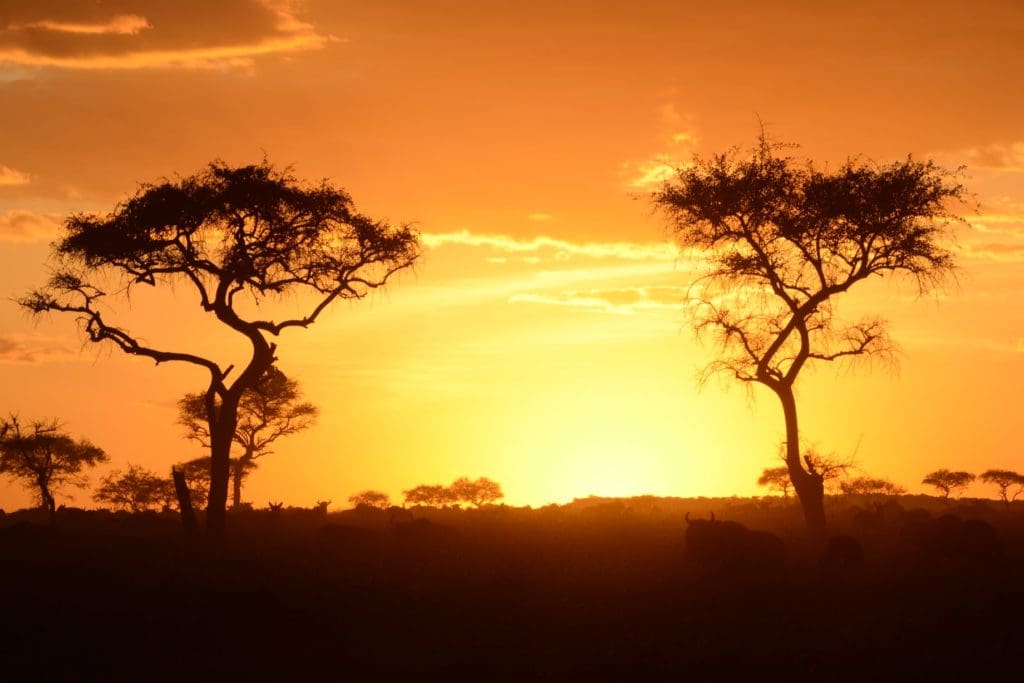

Safari Njema! THANK YOU
I trust that the photos from Kenya and Tanzania over the last 30 days have inspired consideration to travel to Africa in the coming months. The camps and lodges are open and AAC can guide you through the air travel guidelines, and arrival protocols in country for your trip planning.

